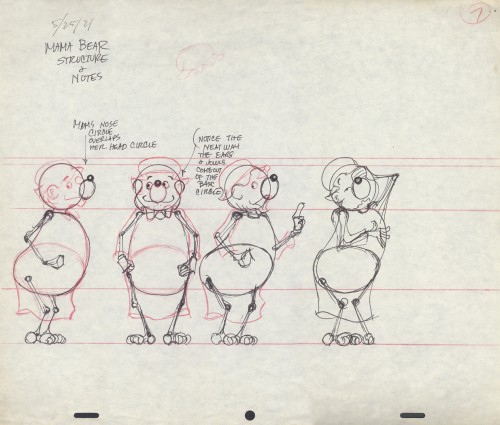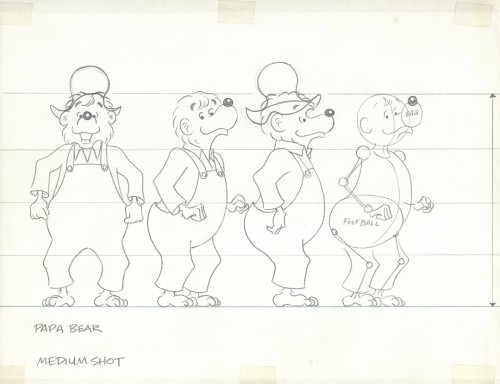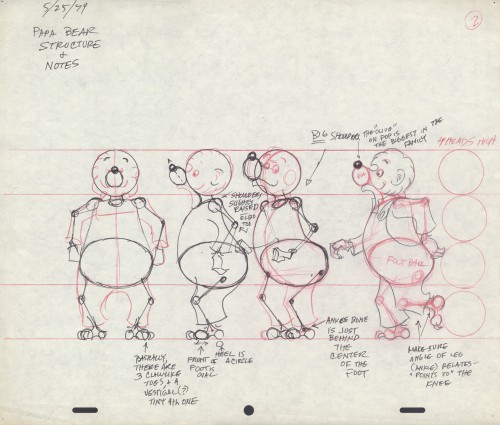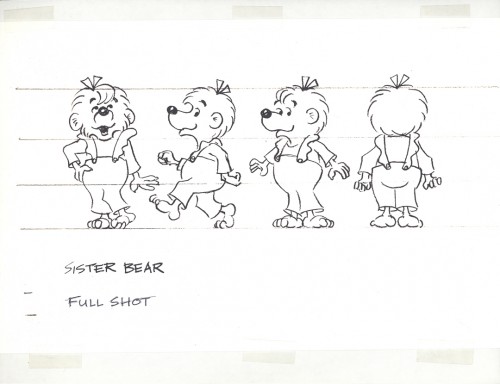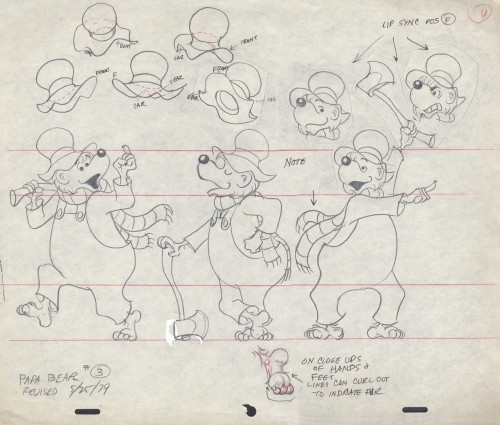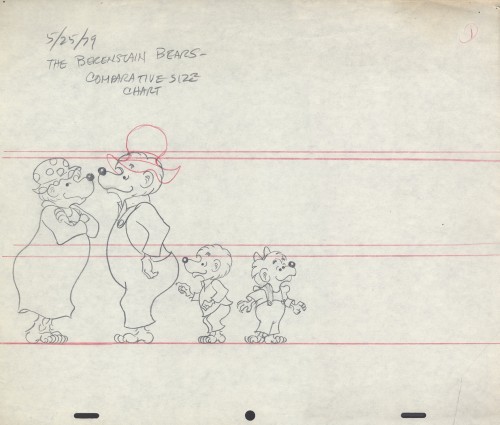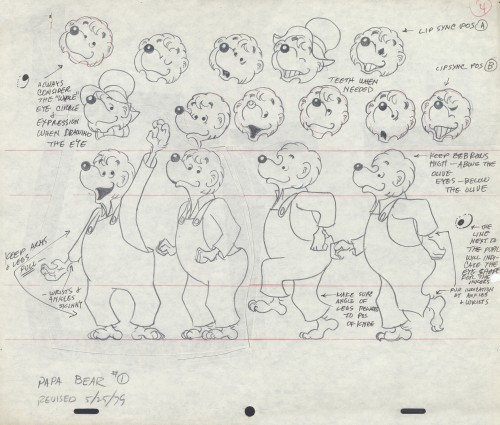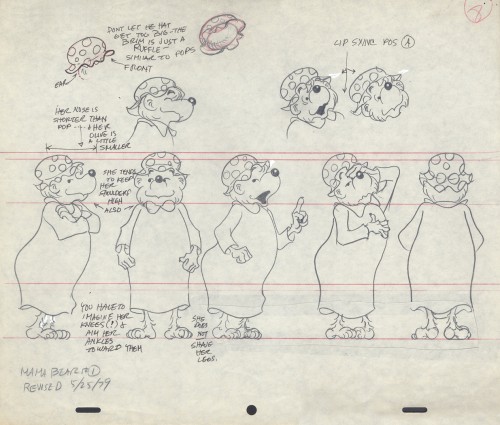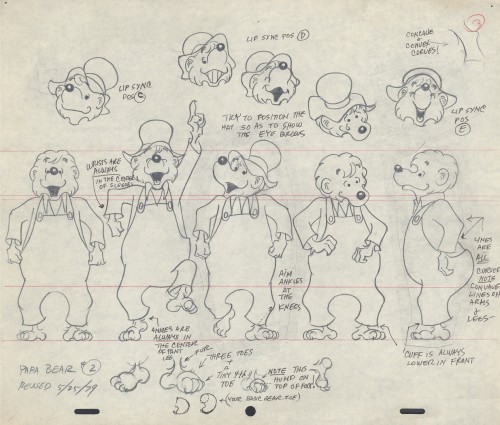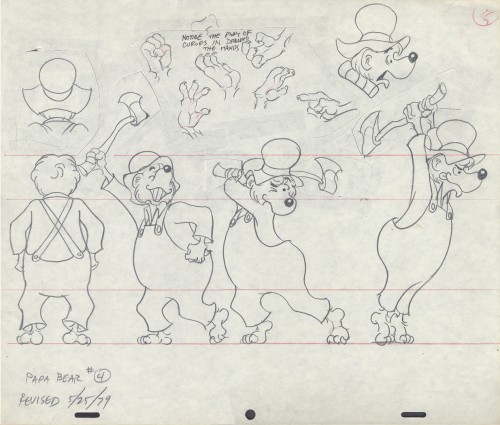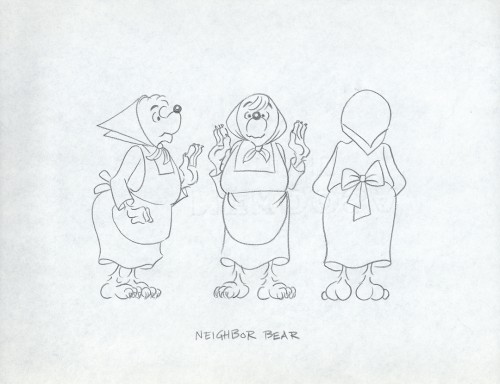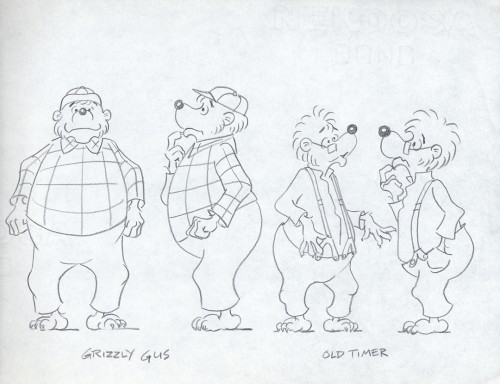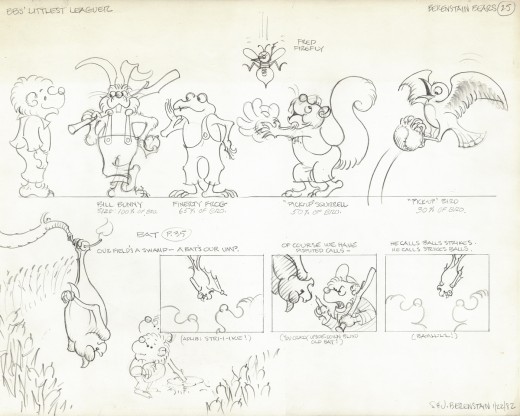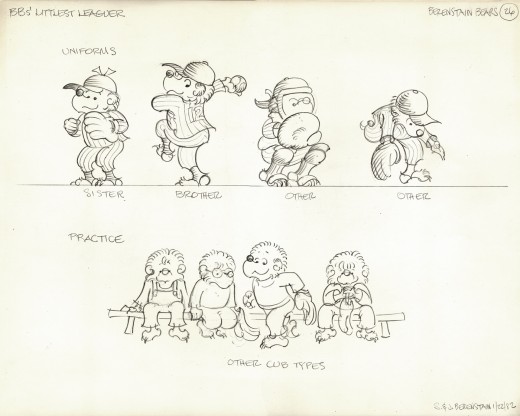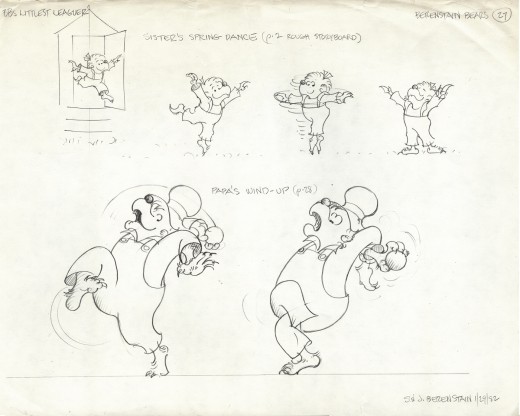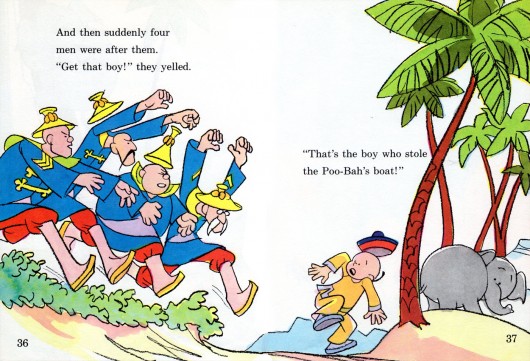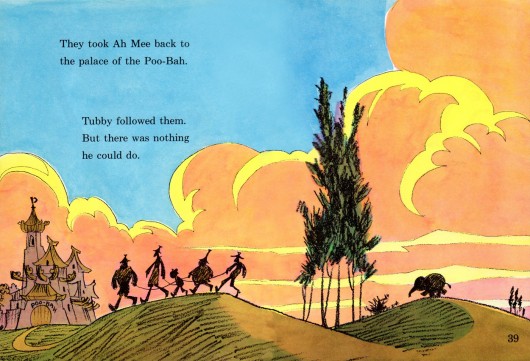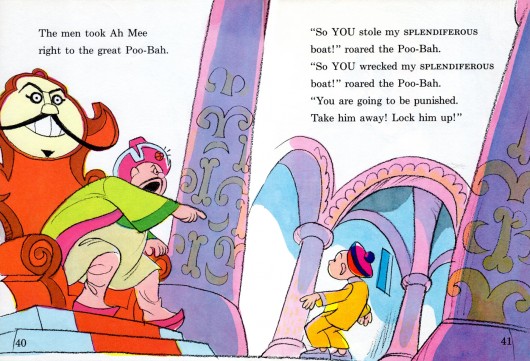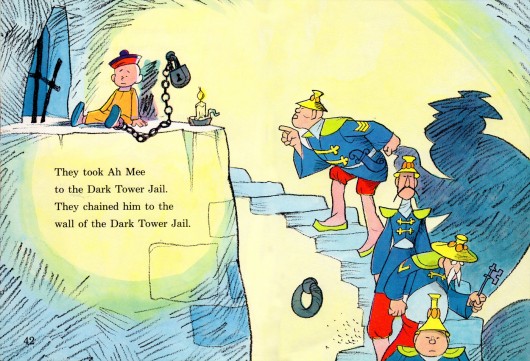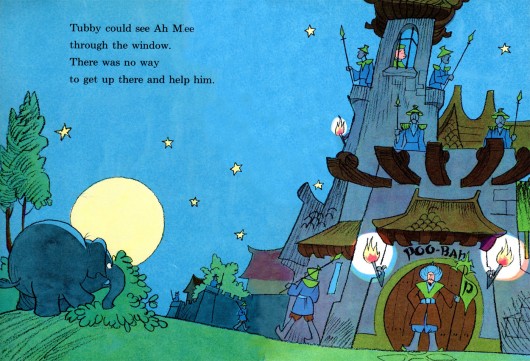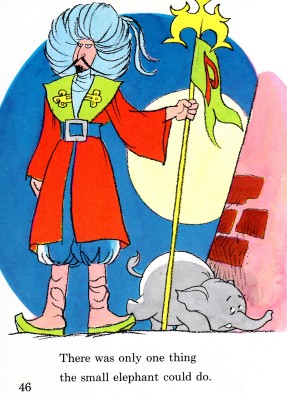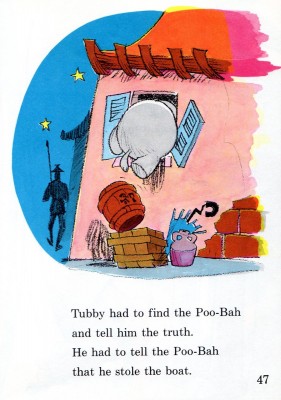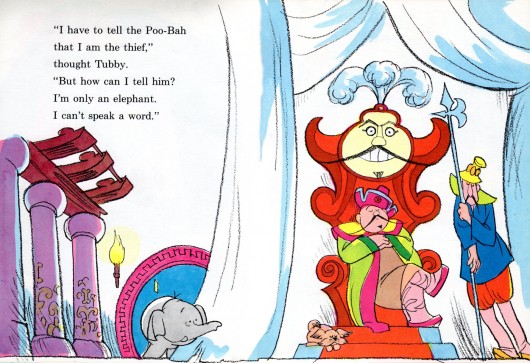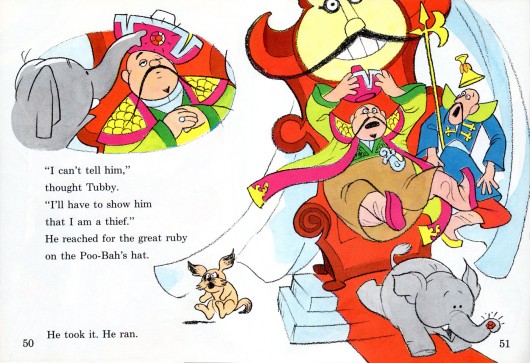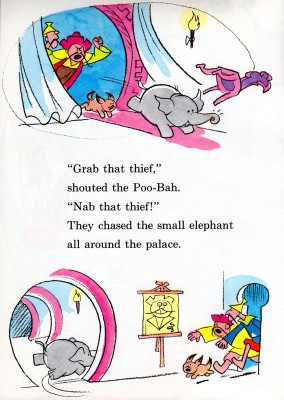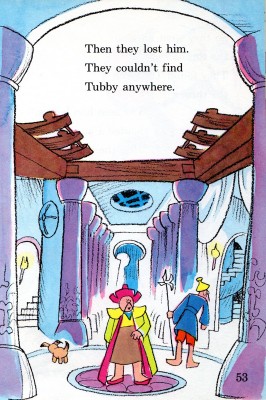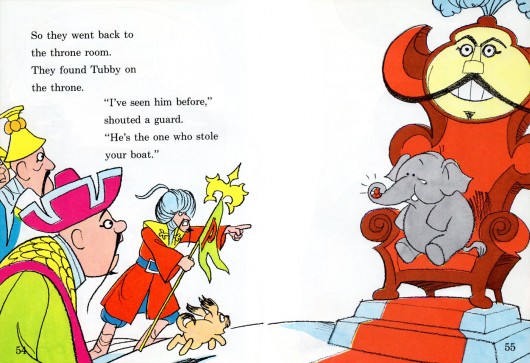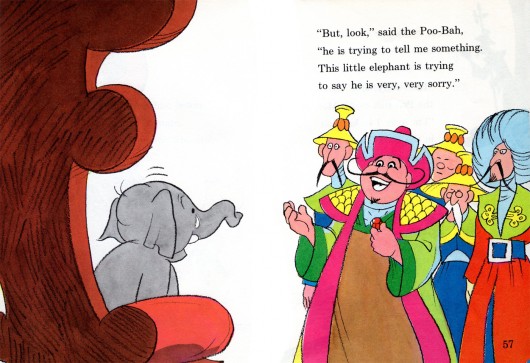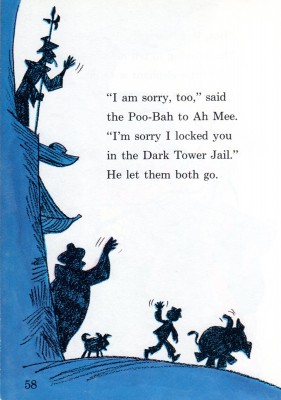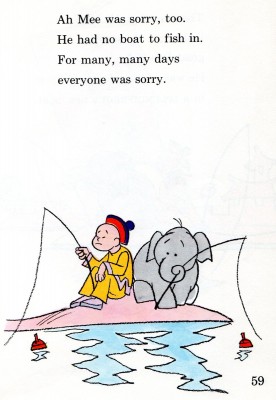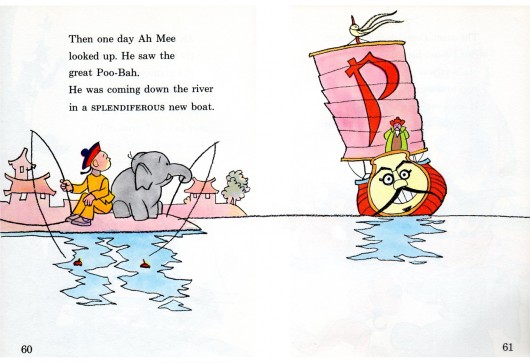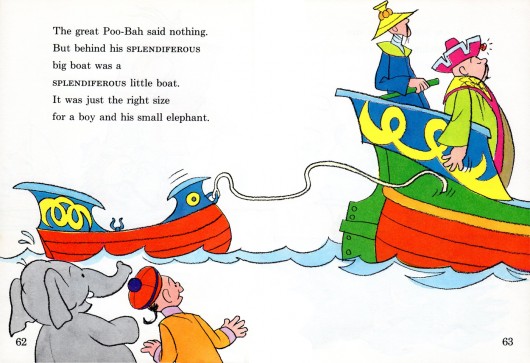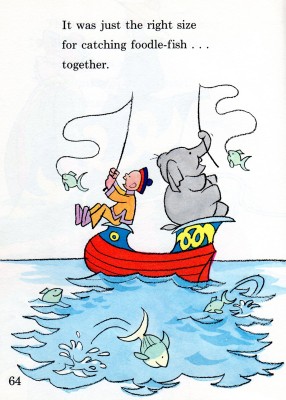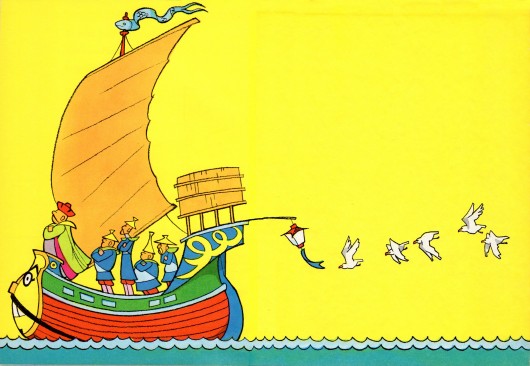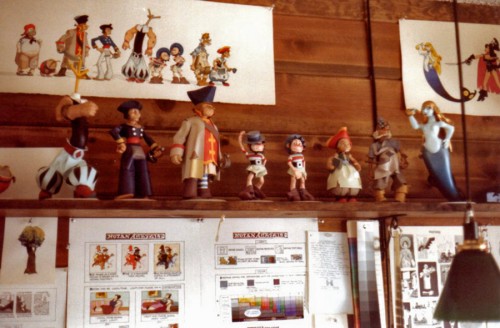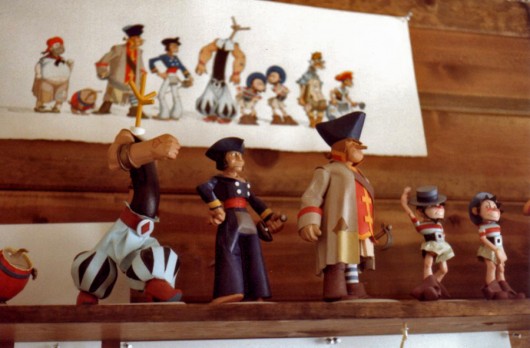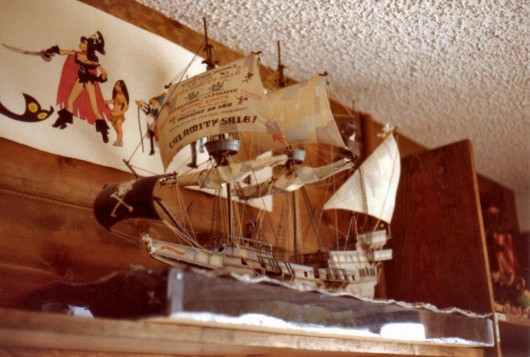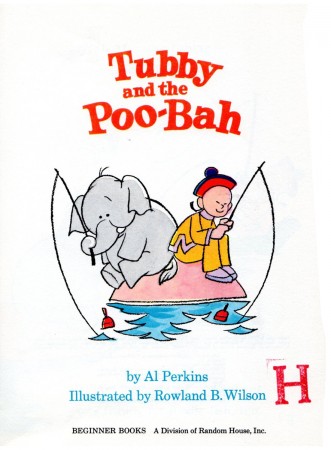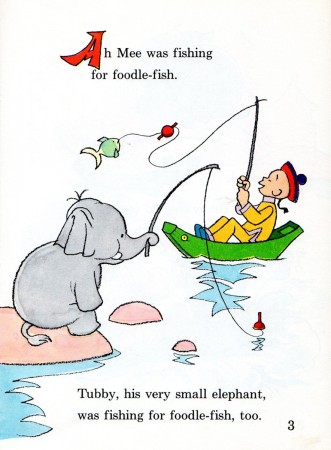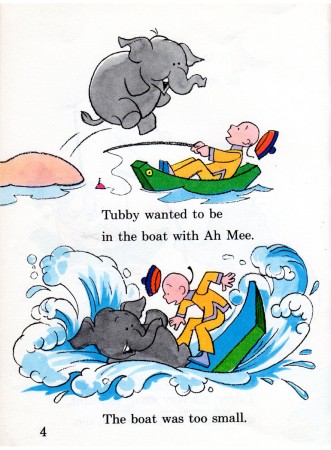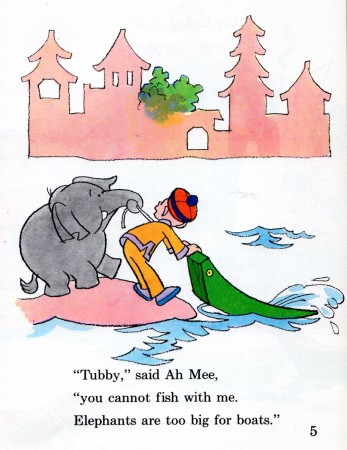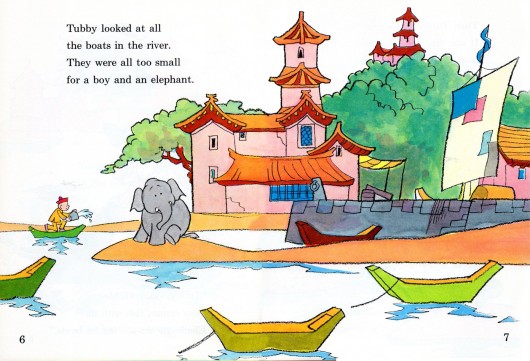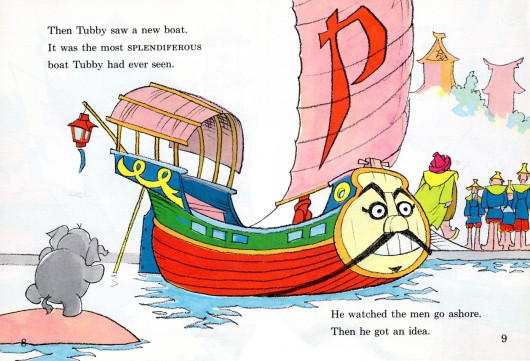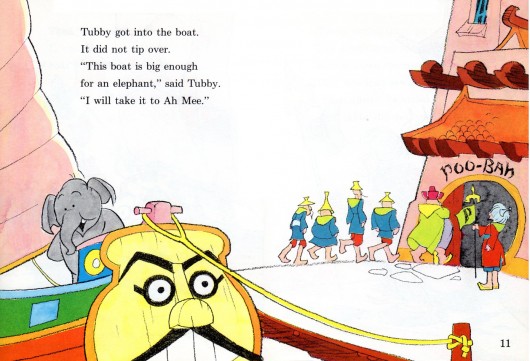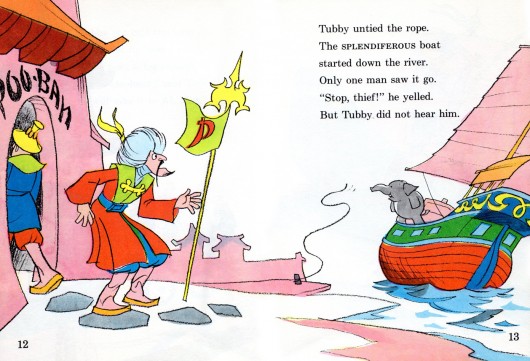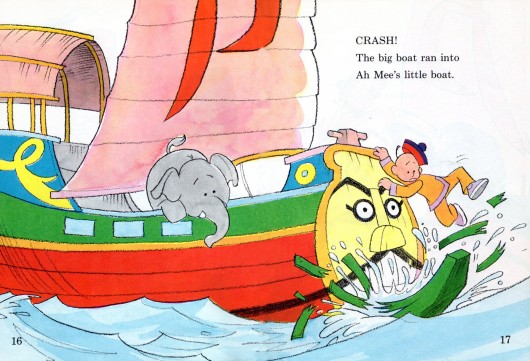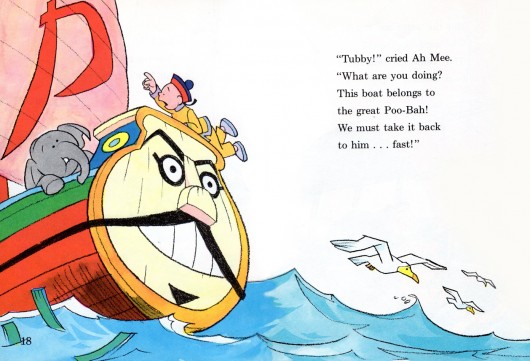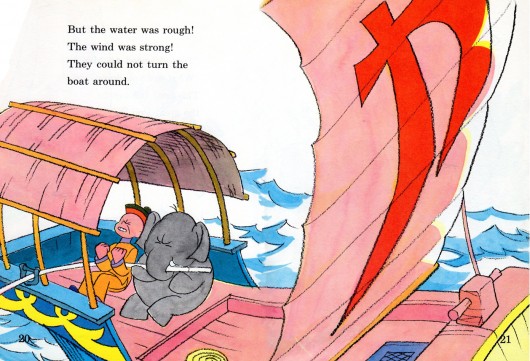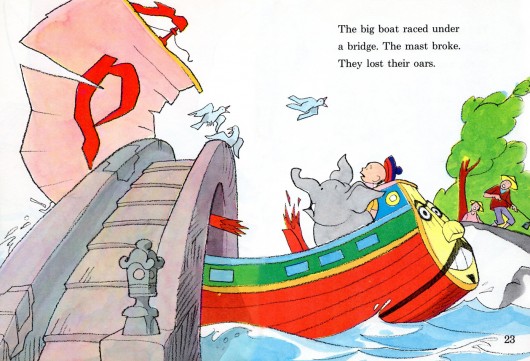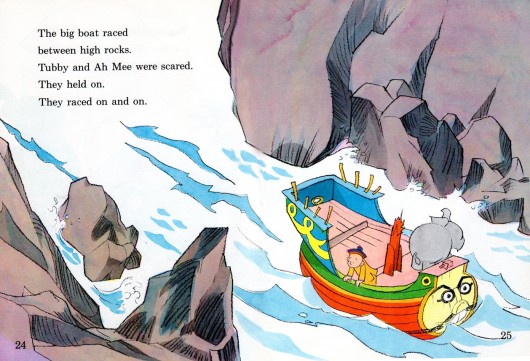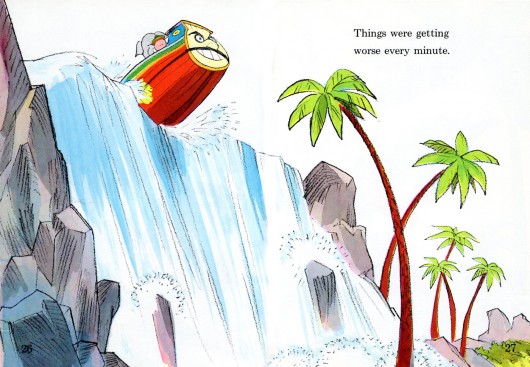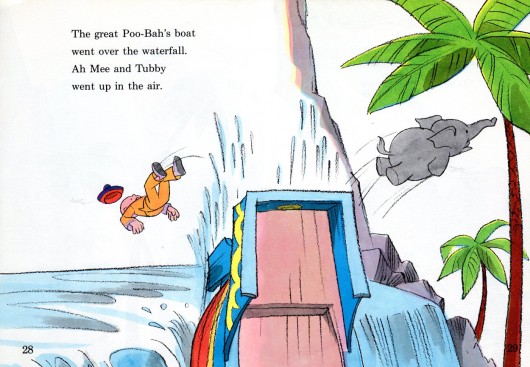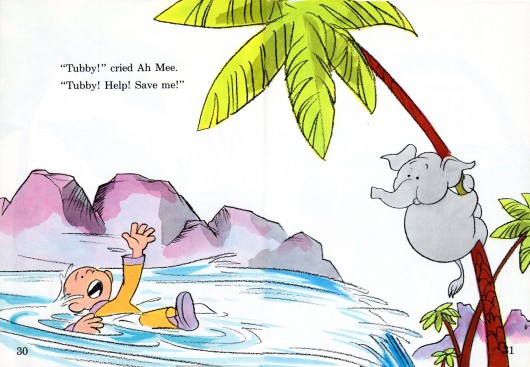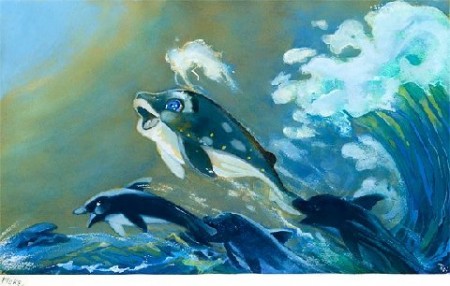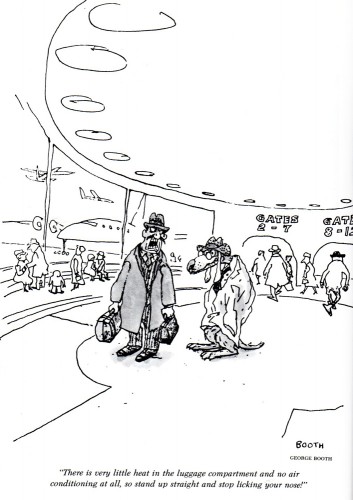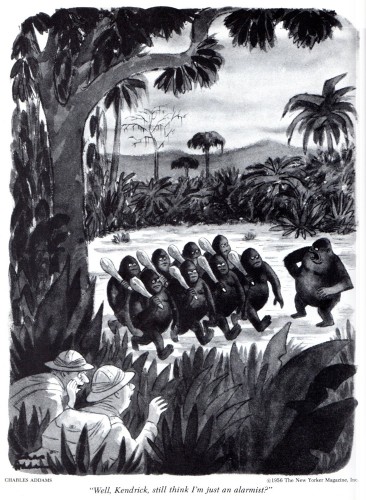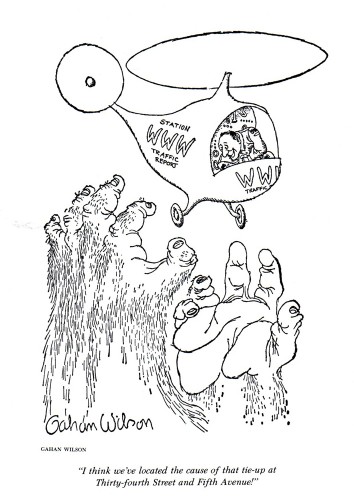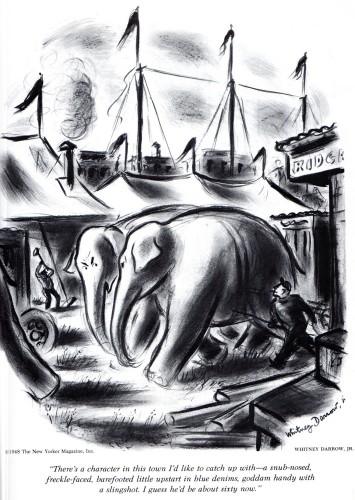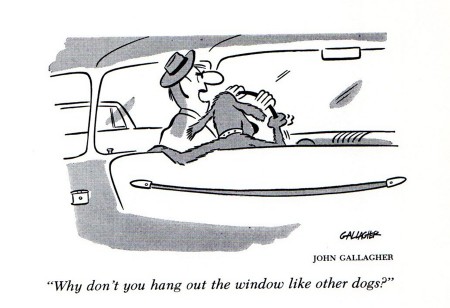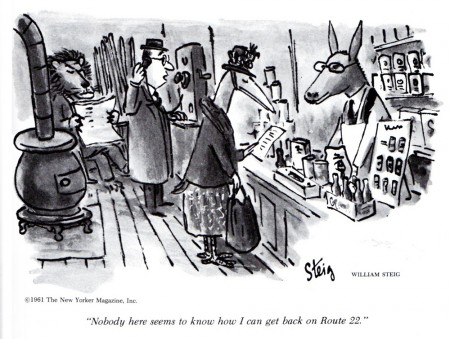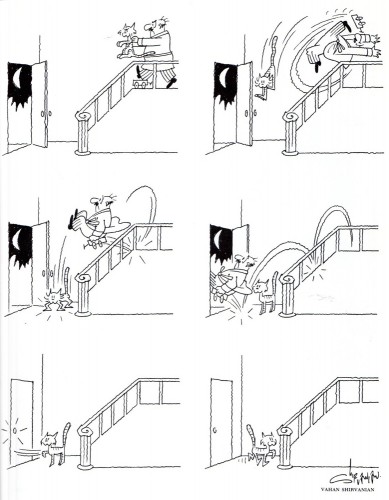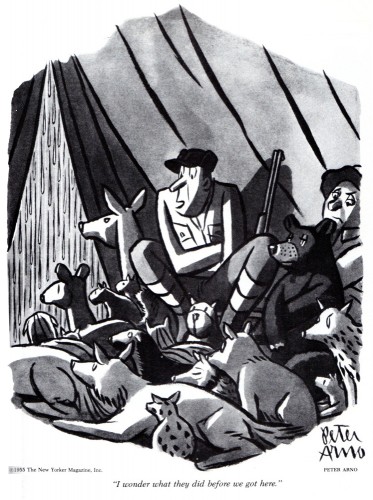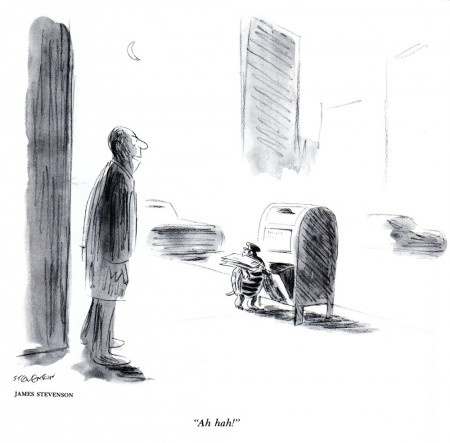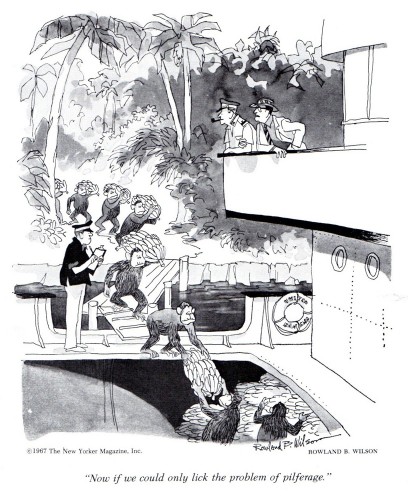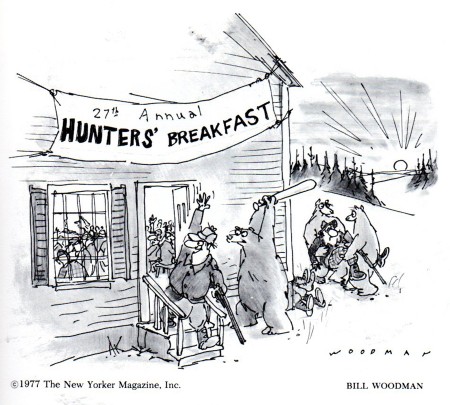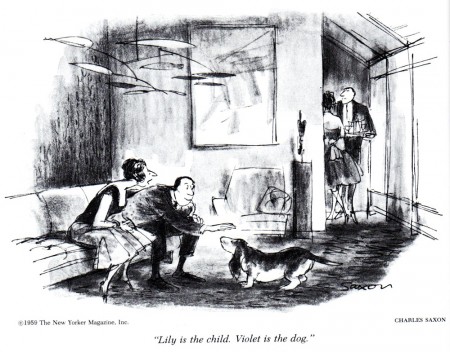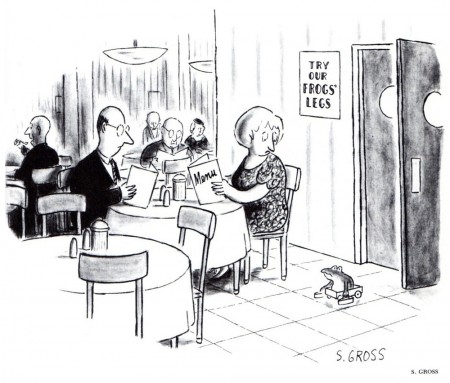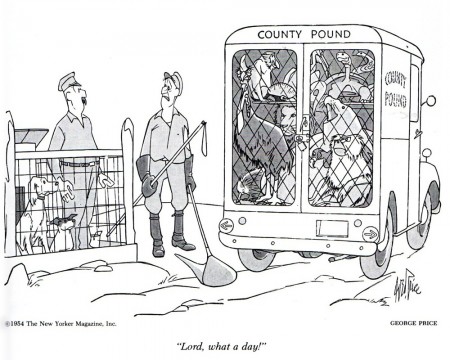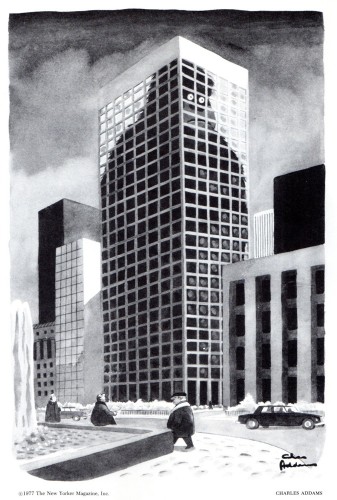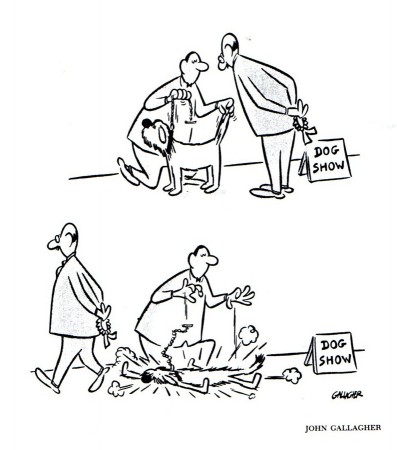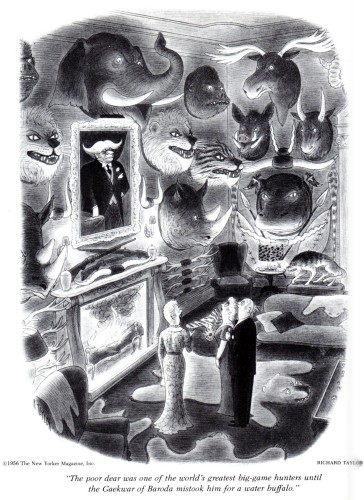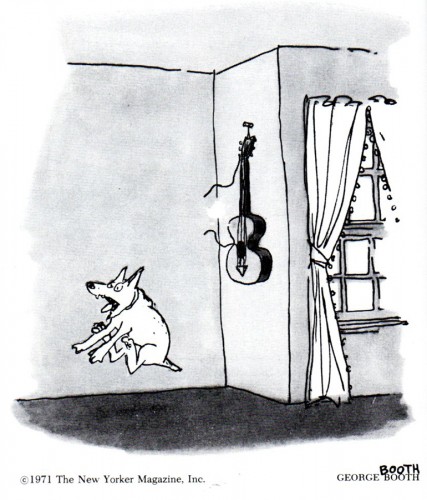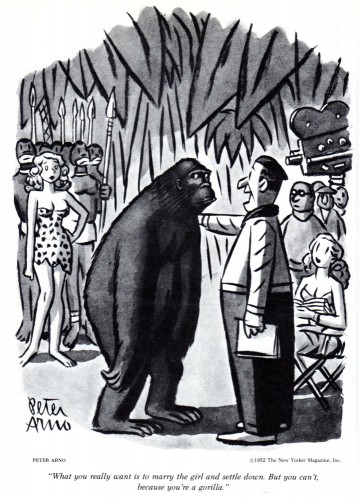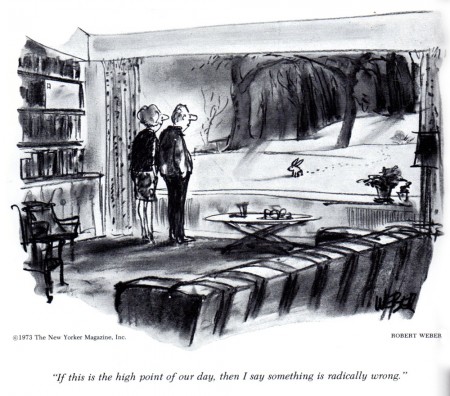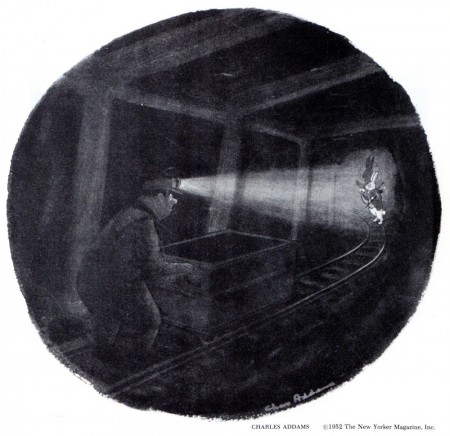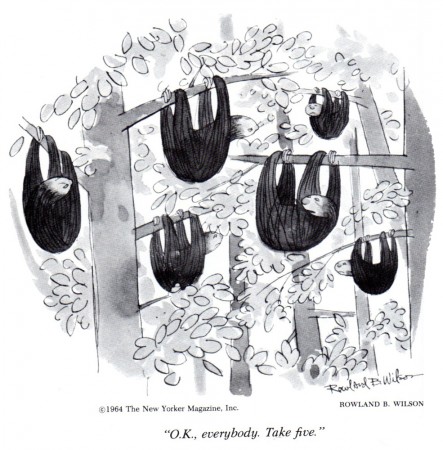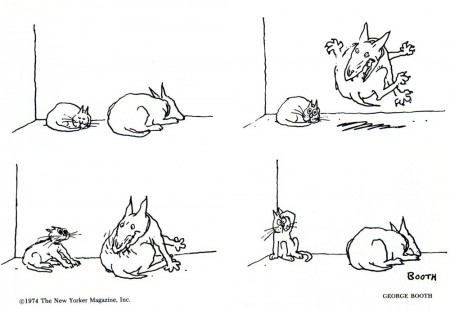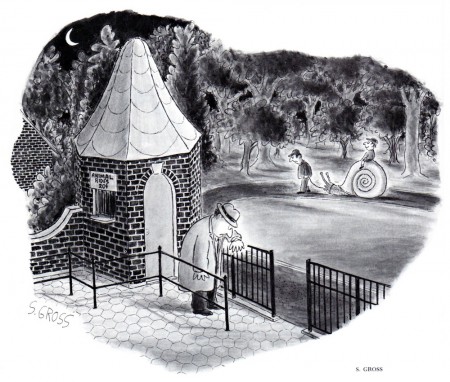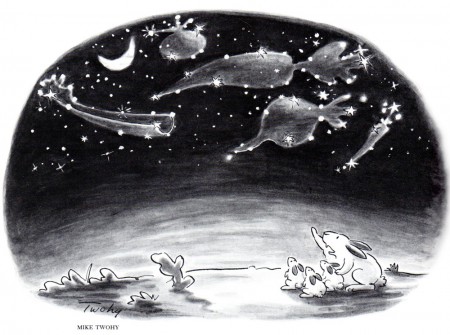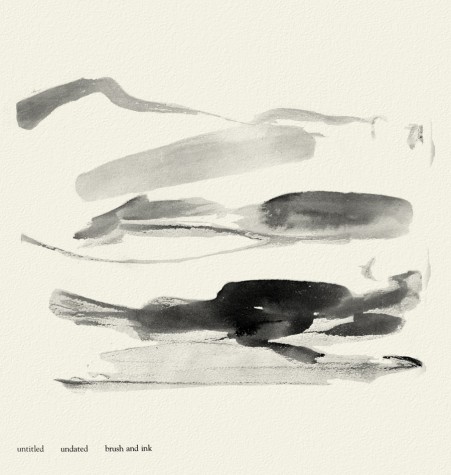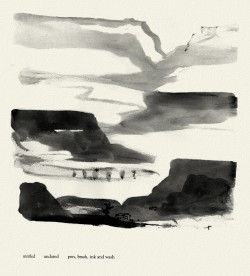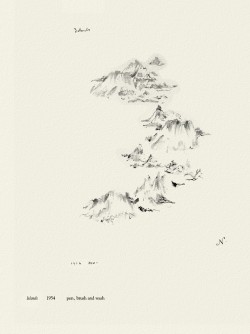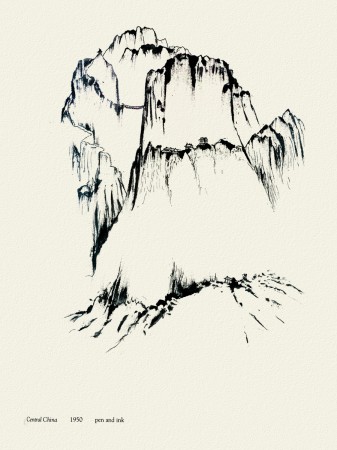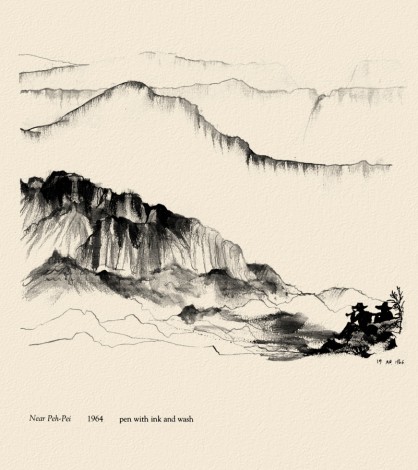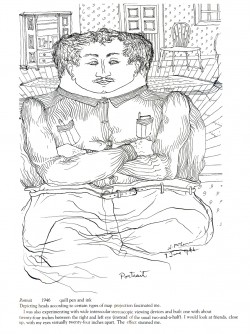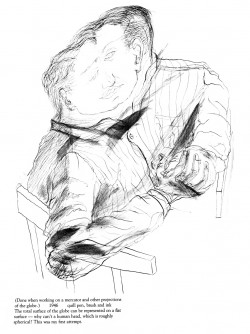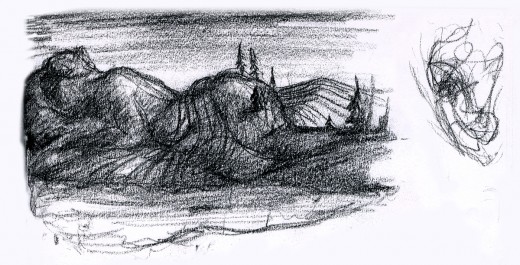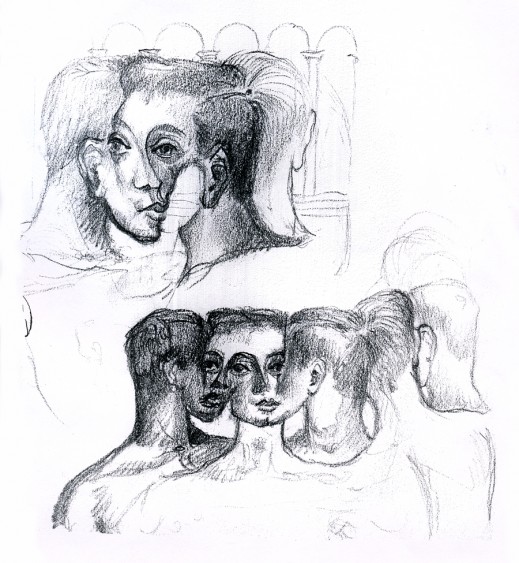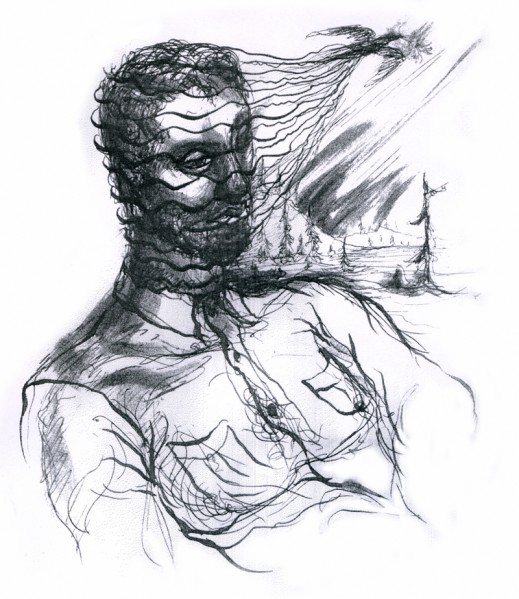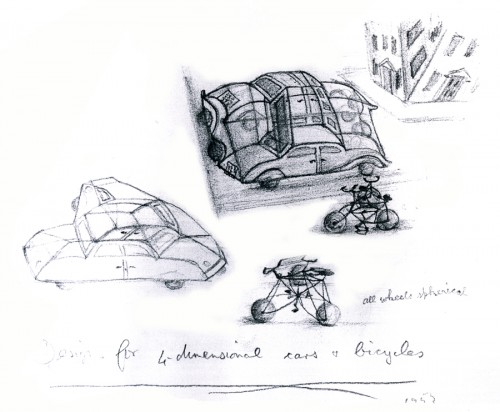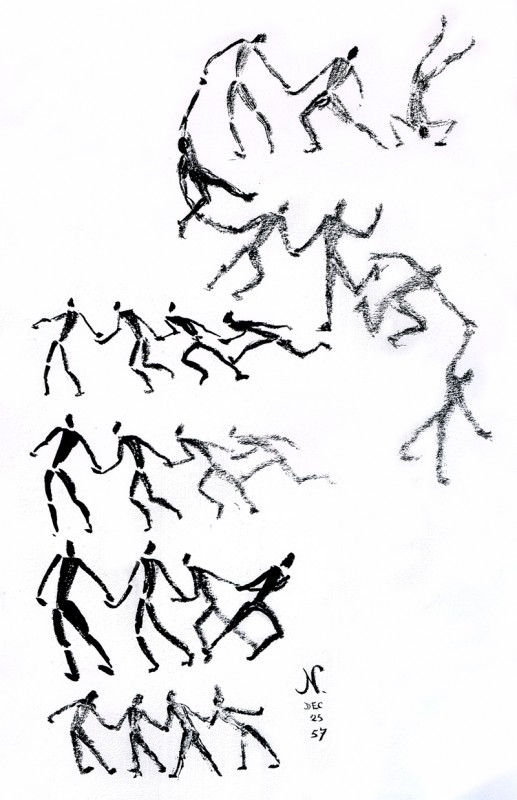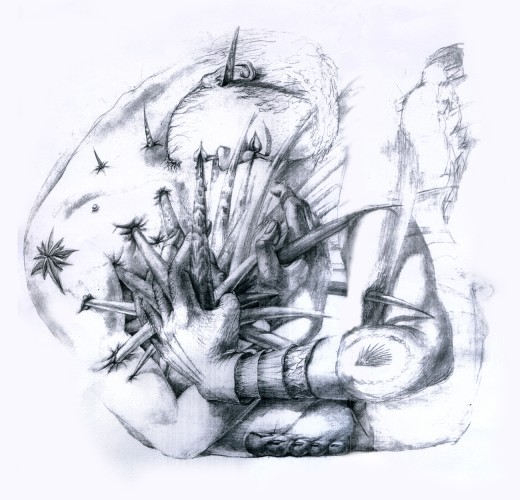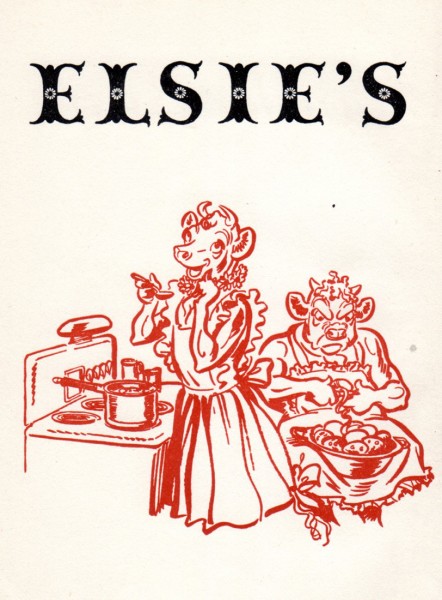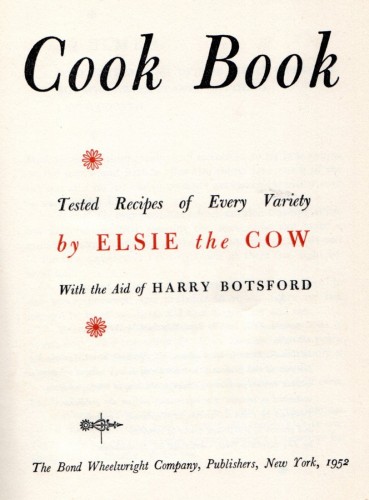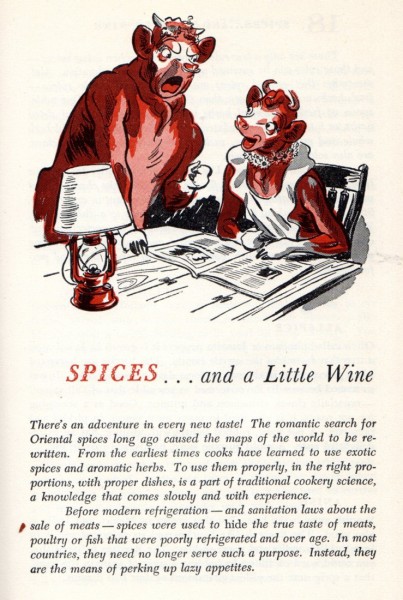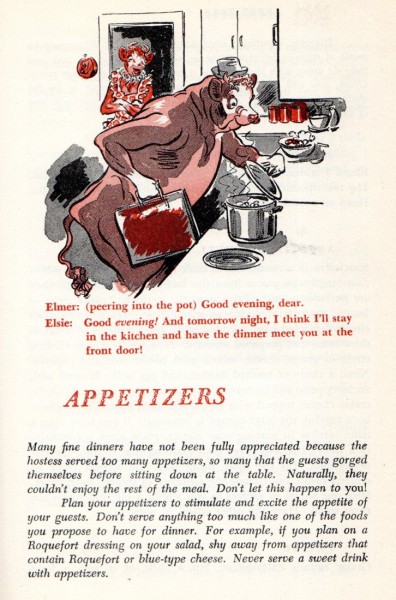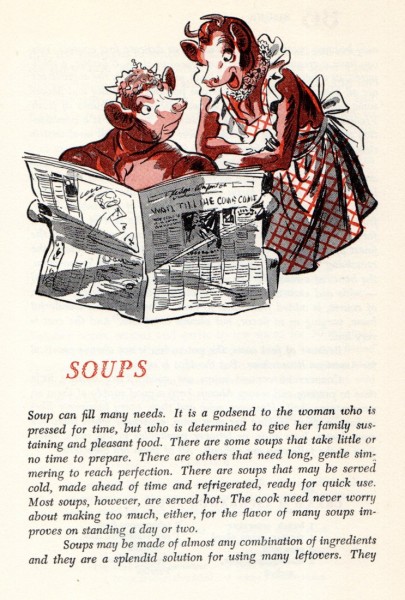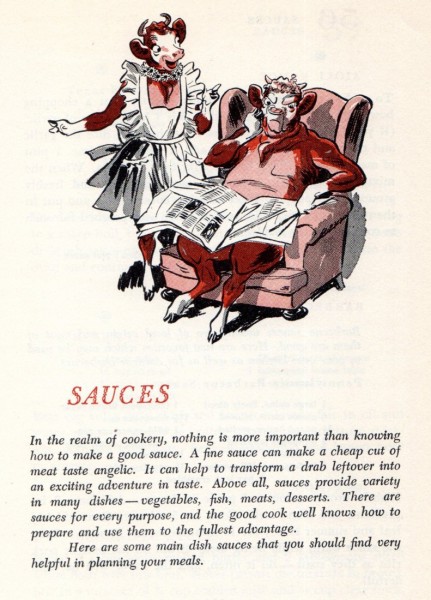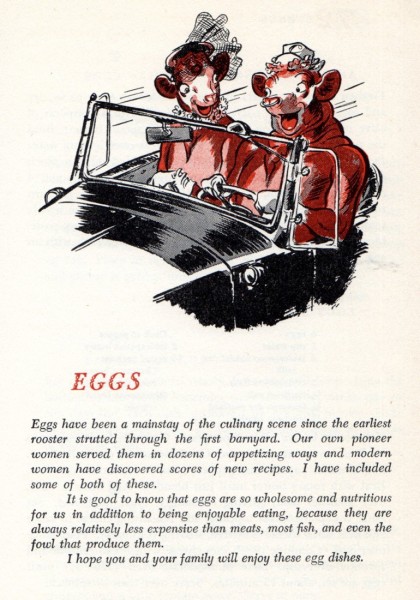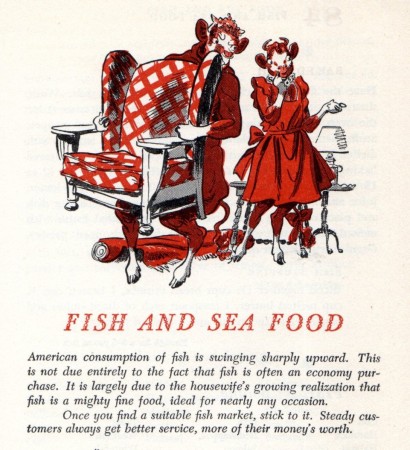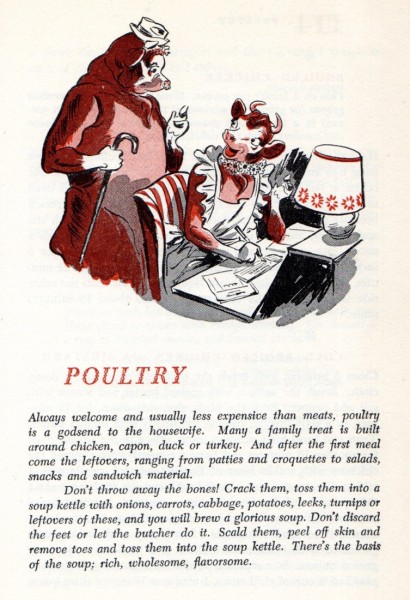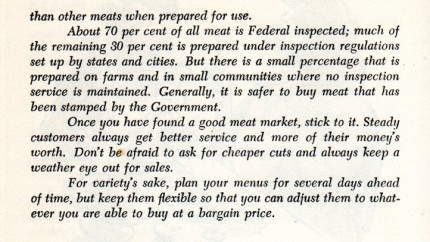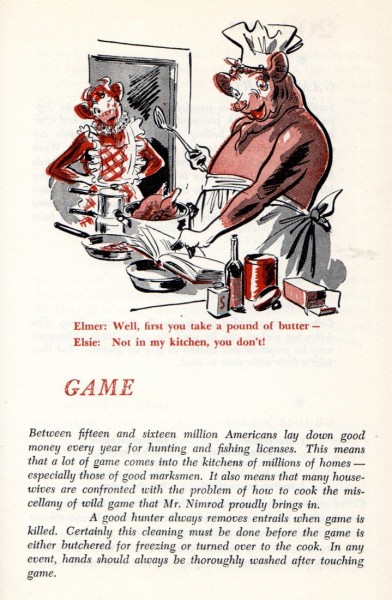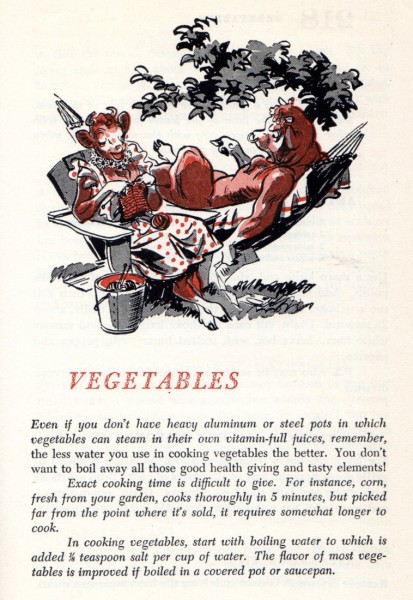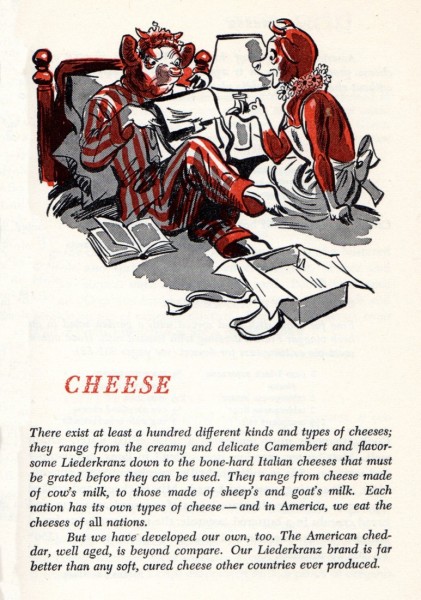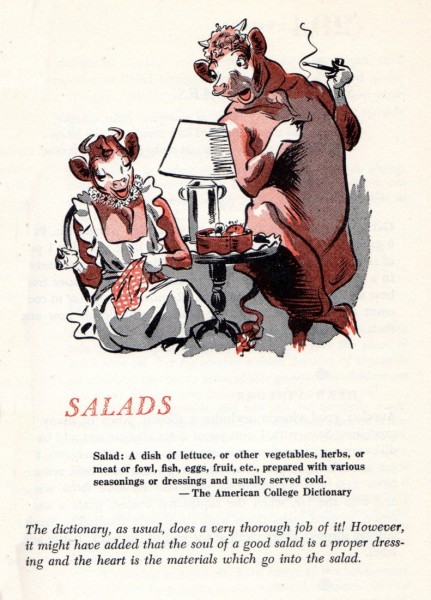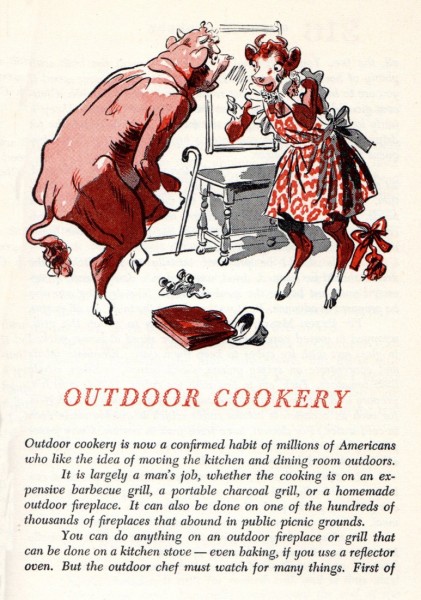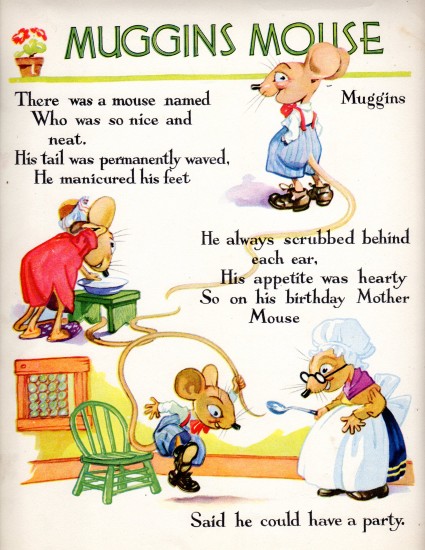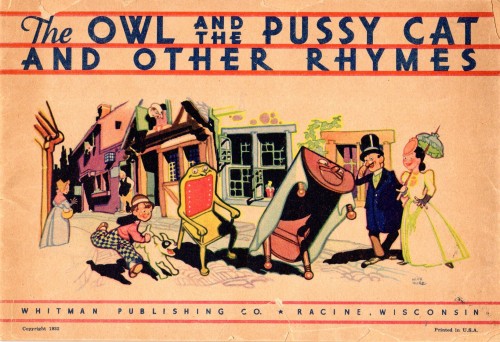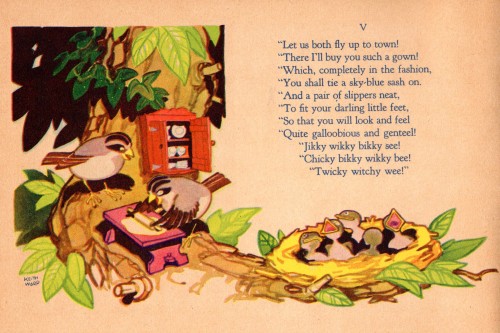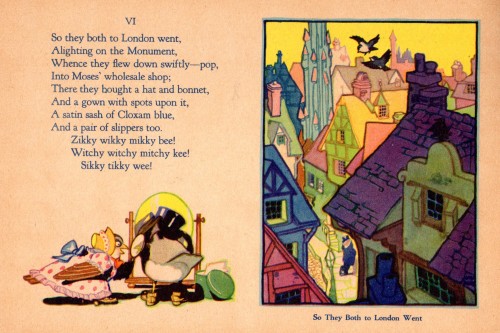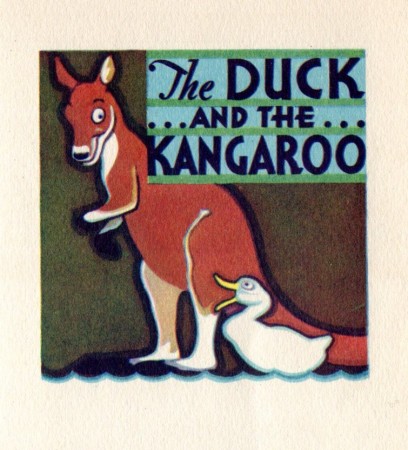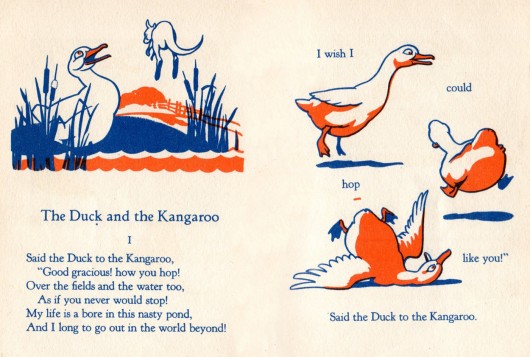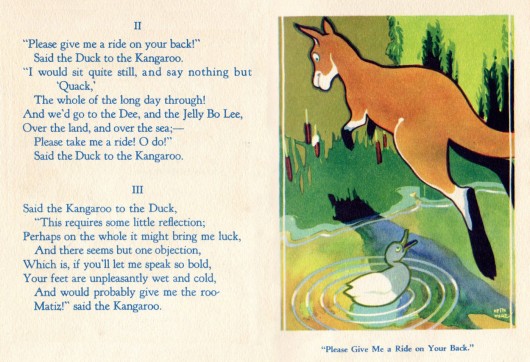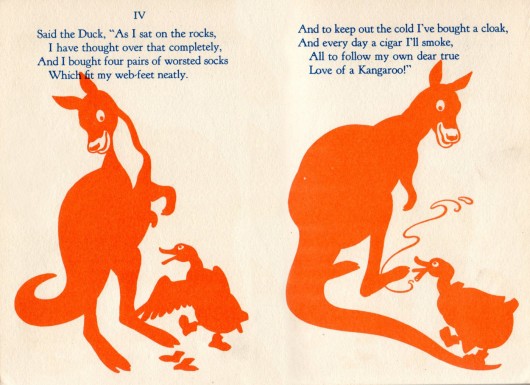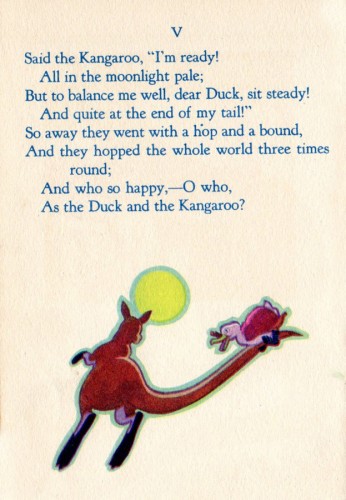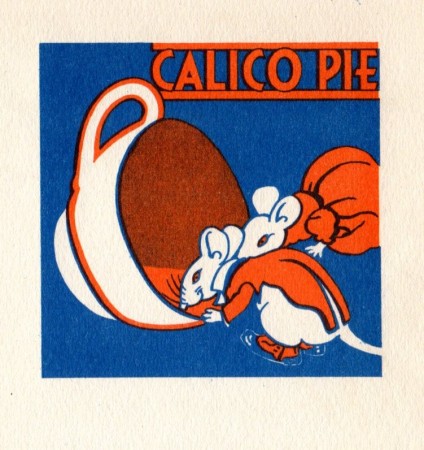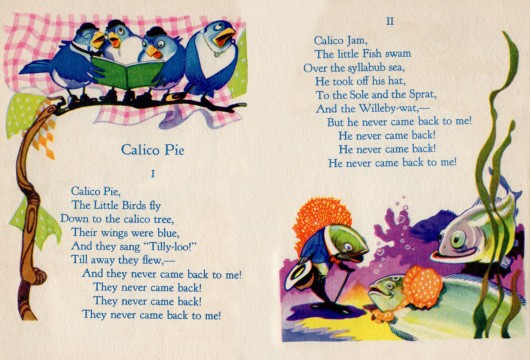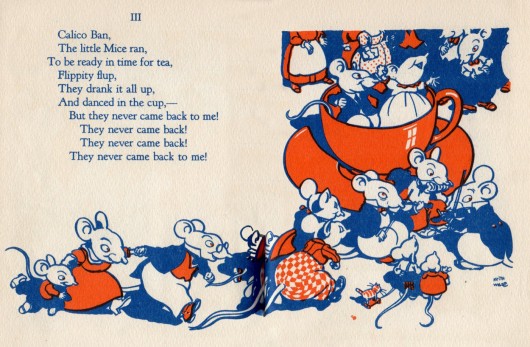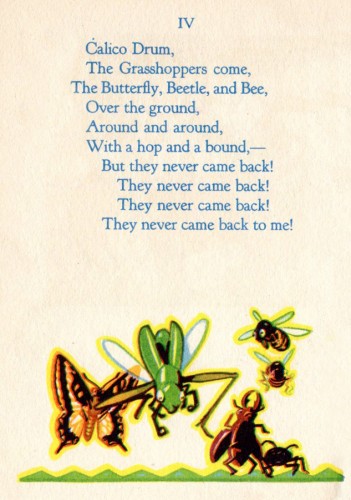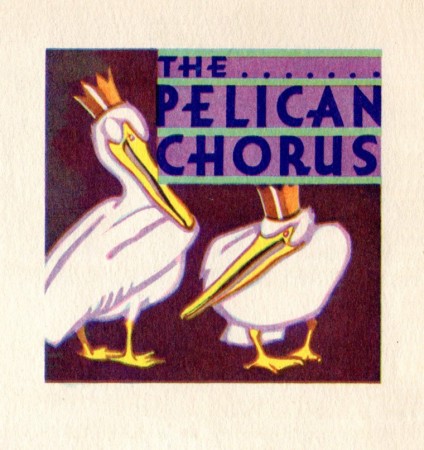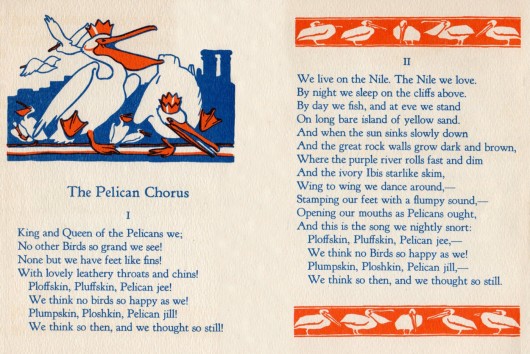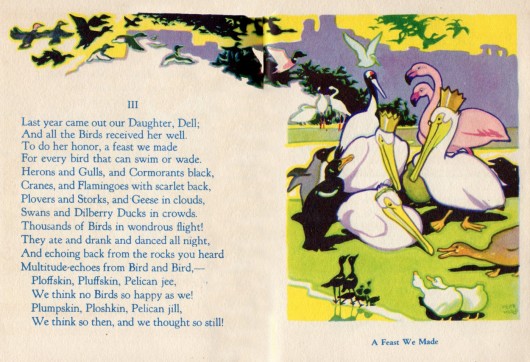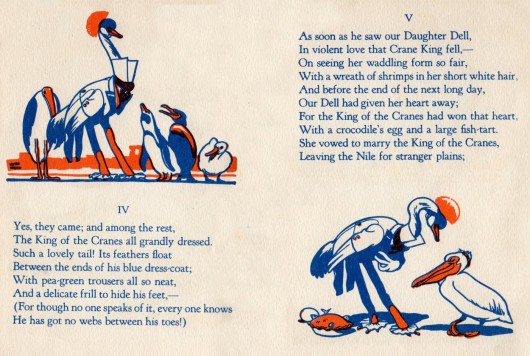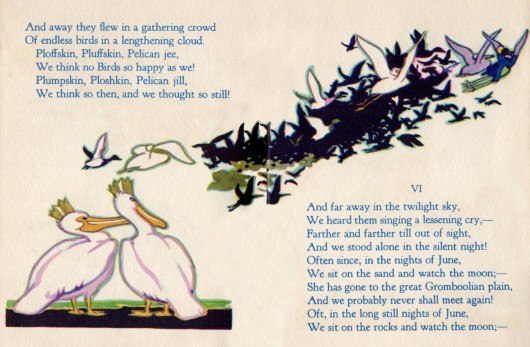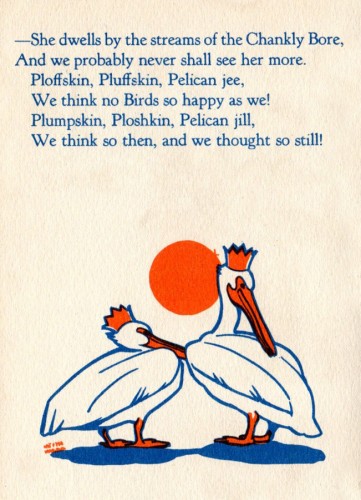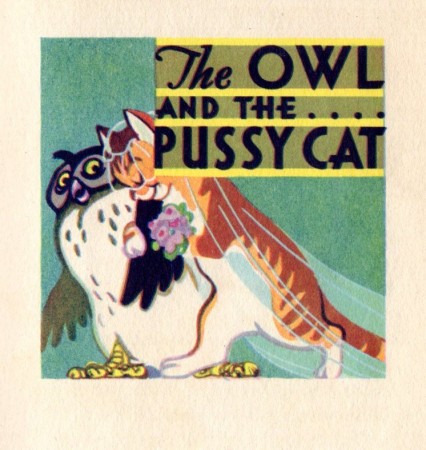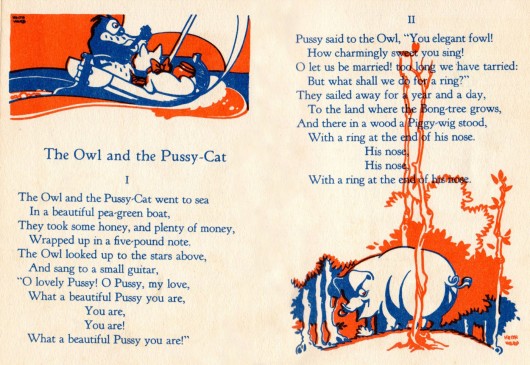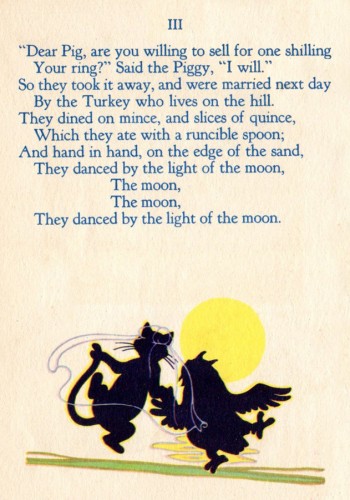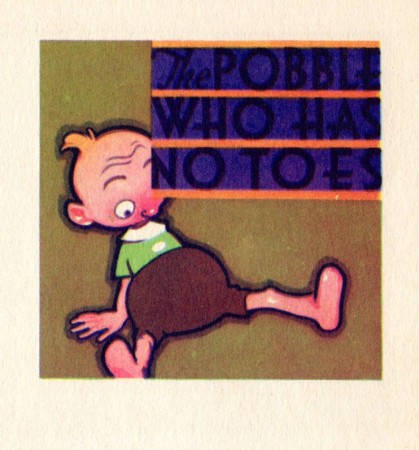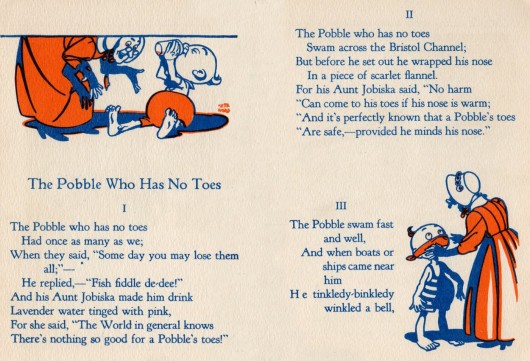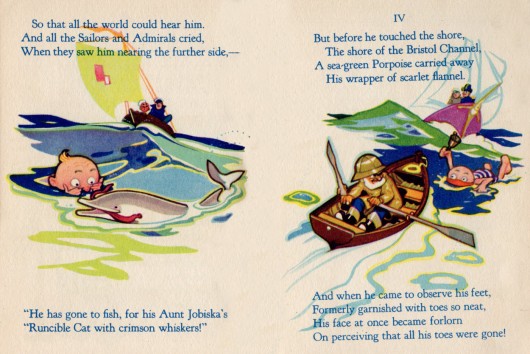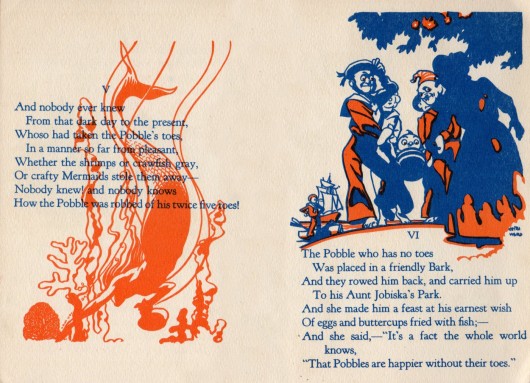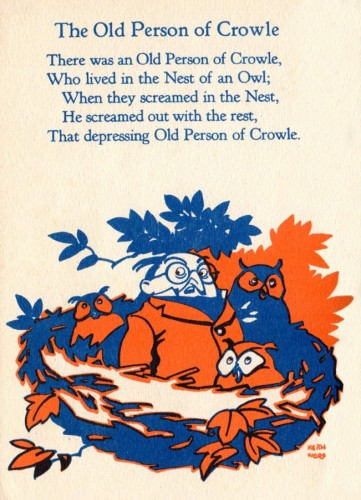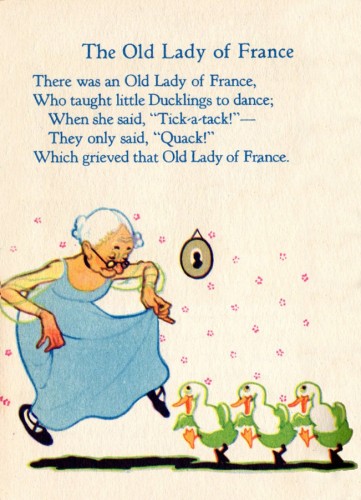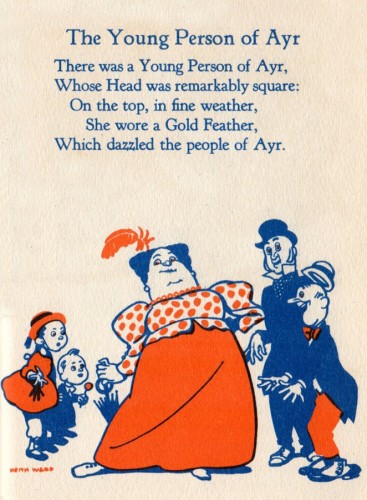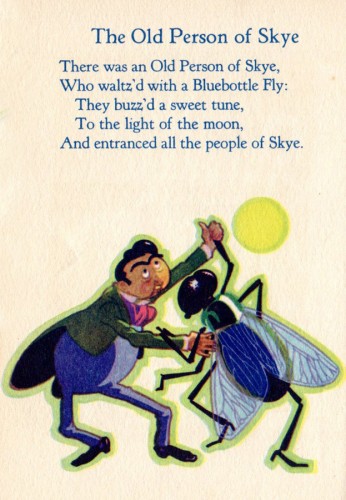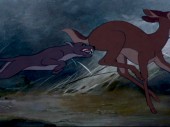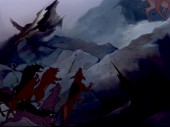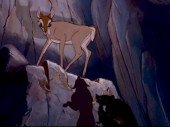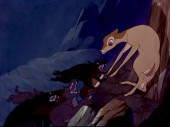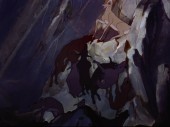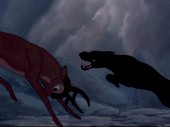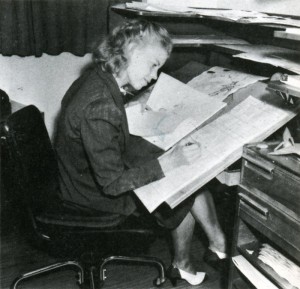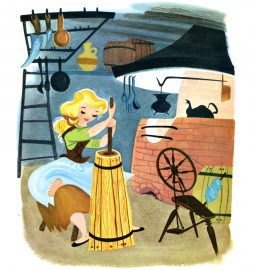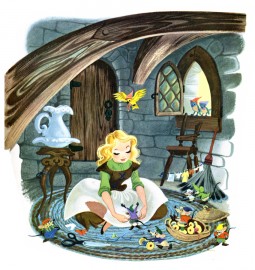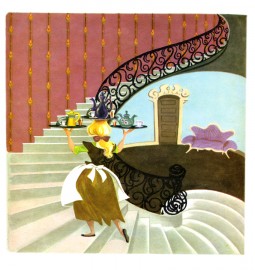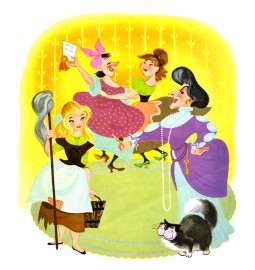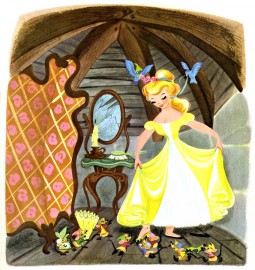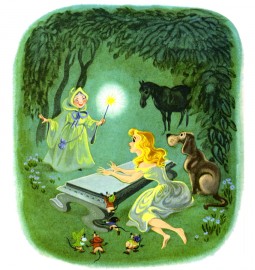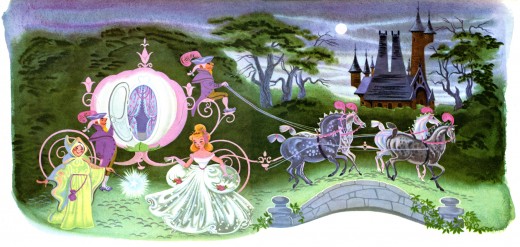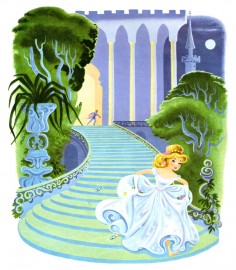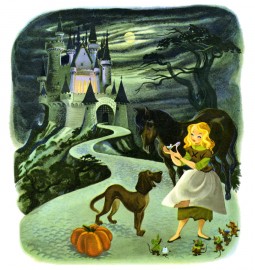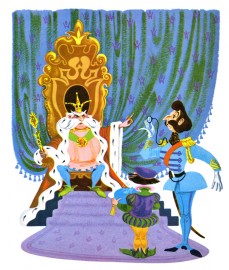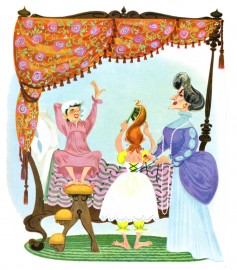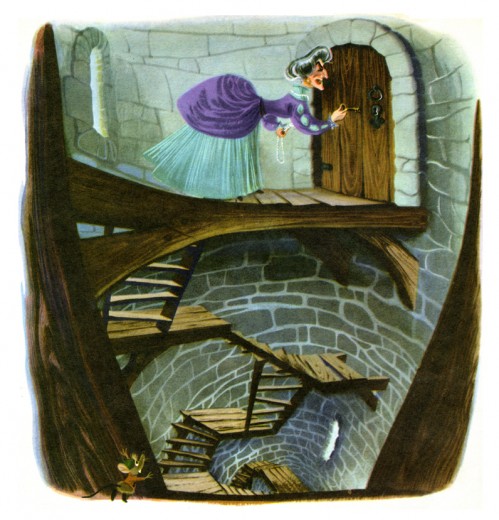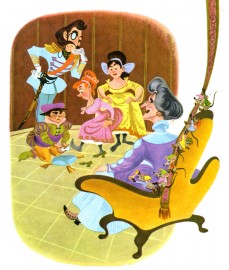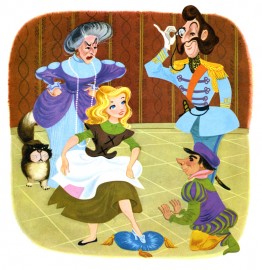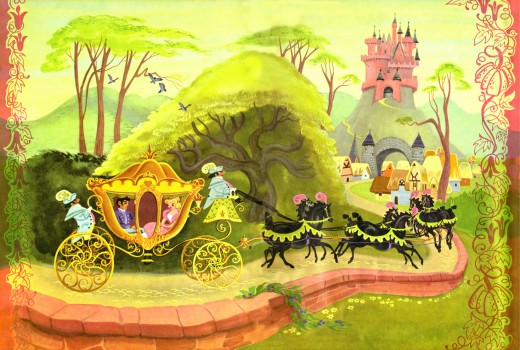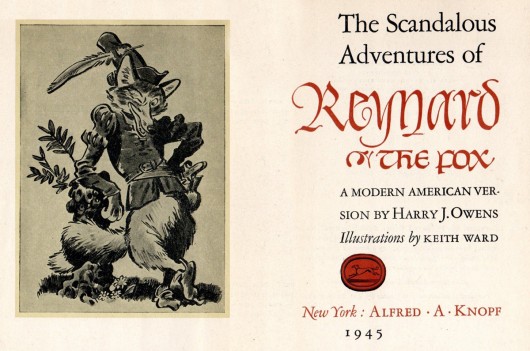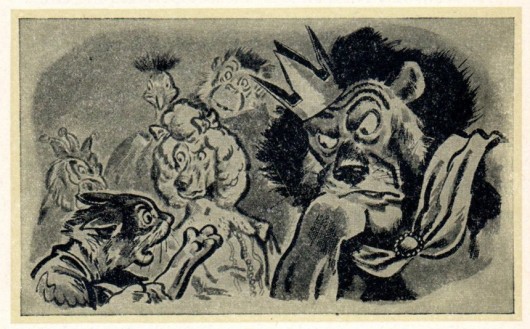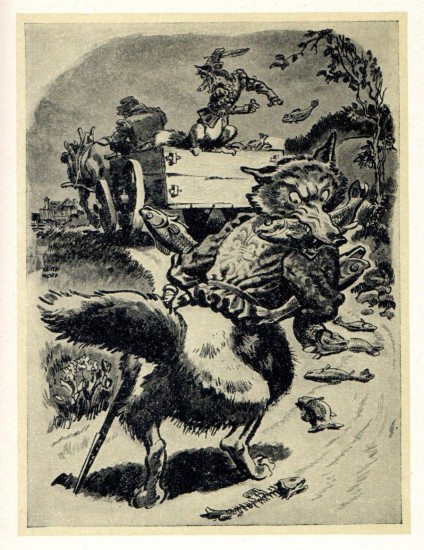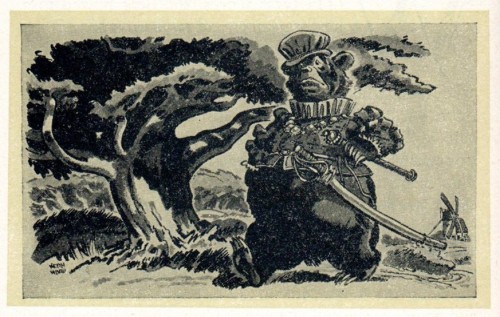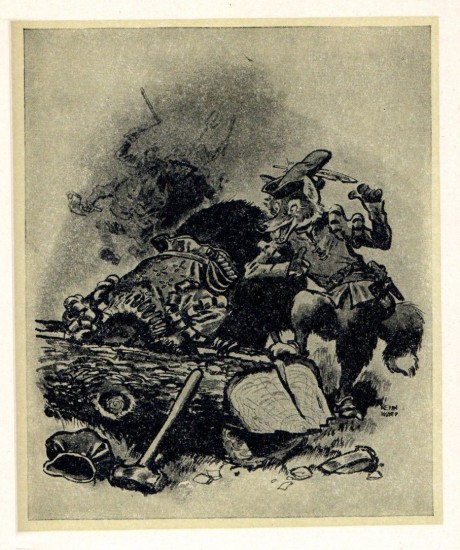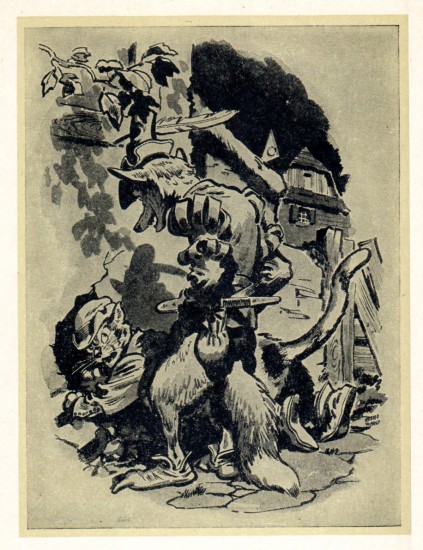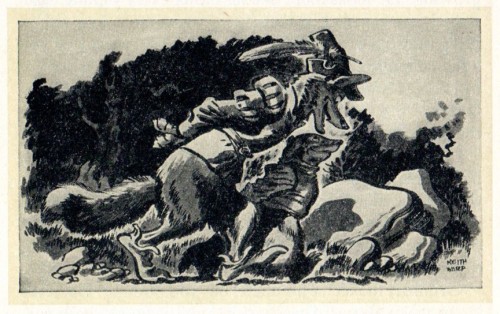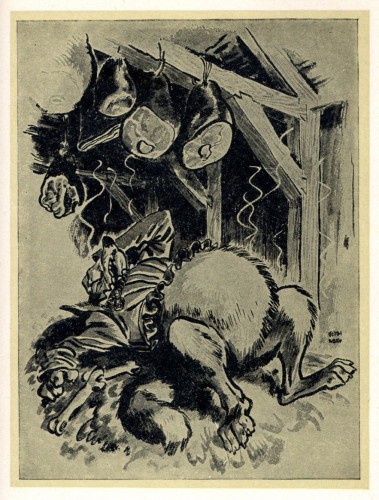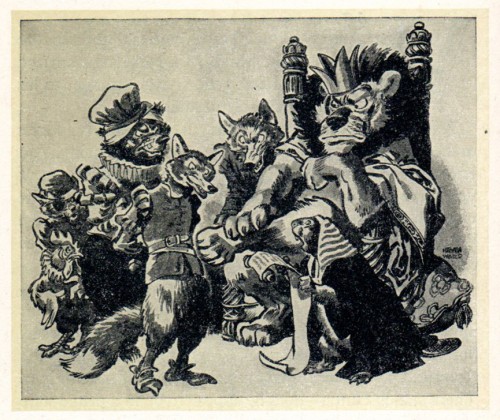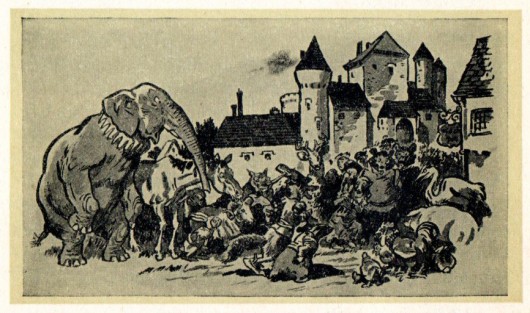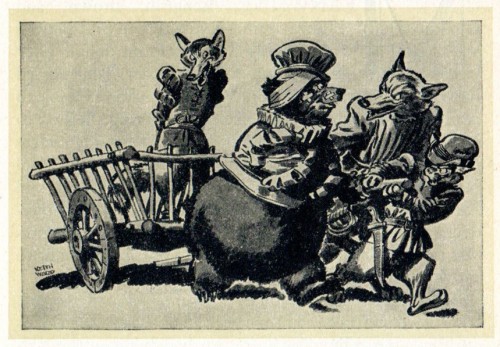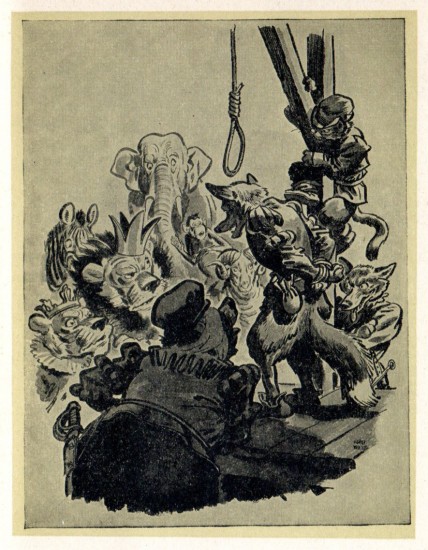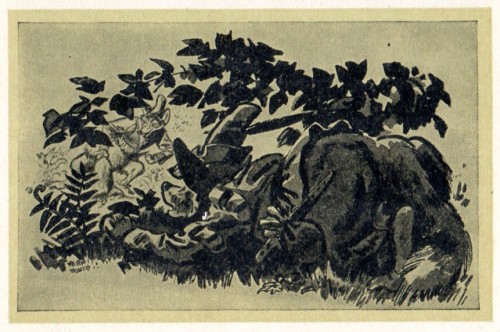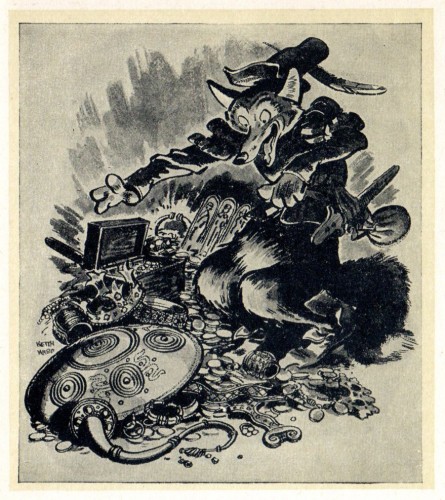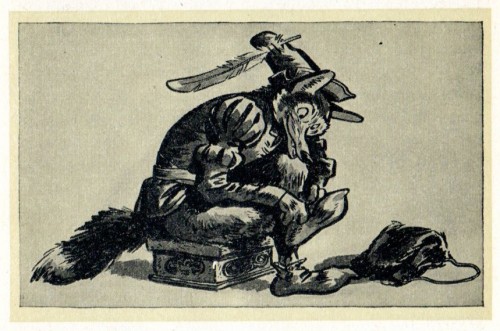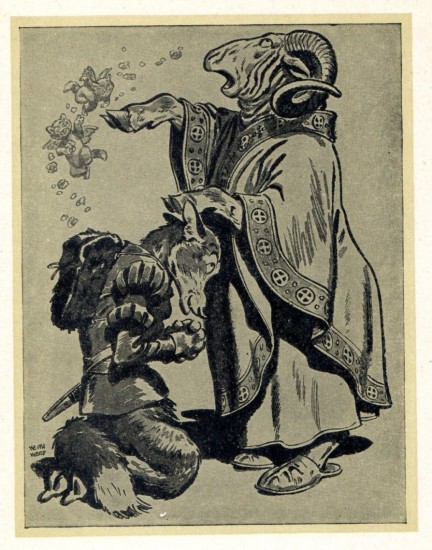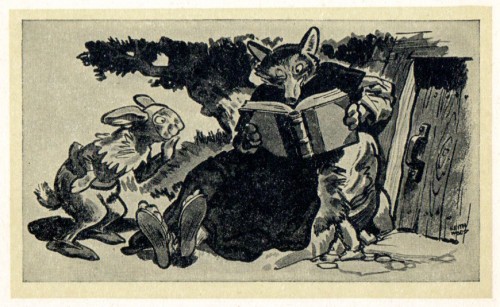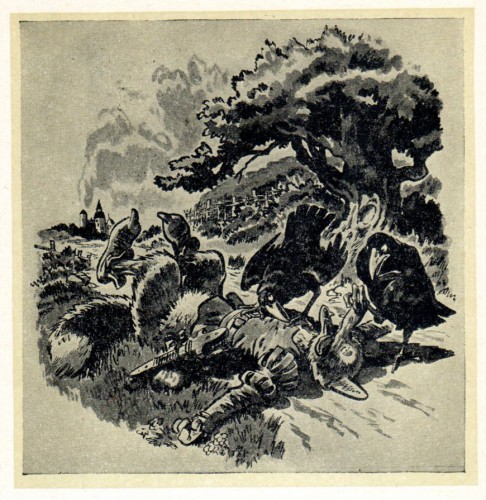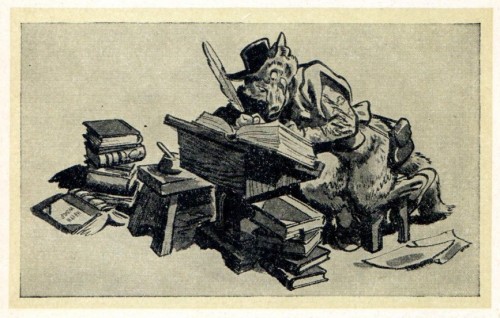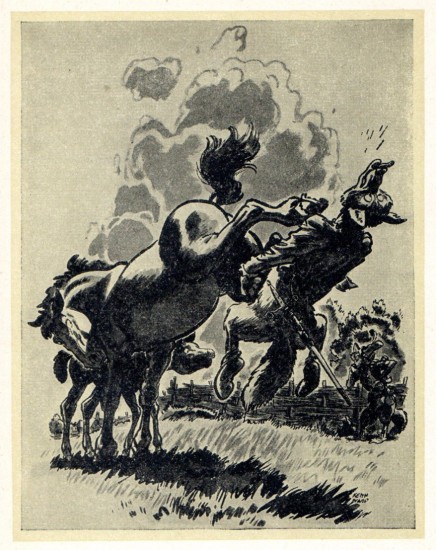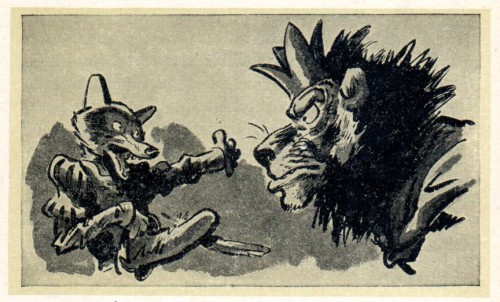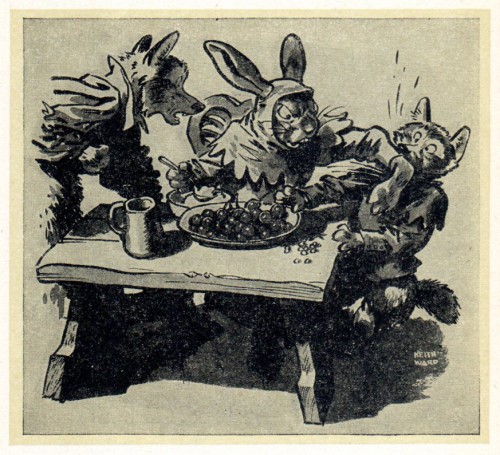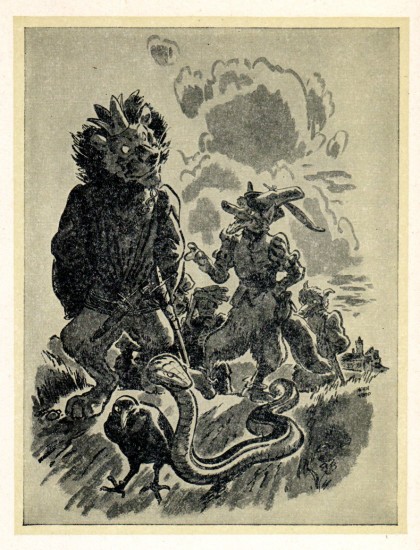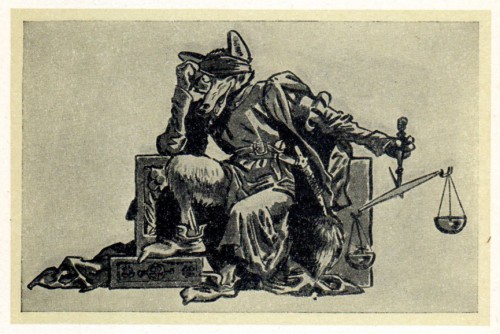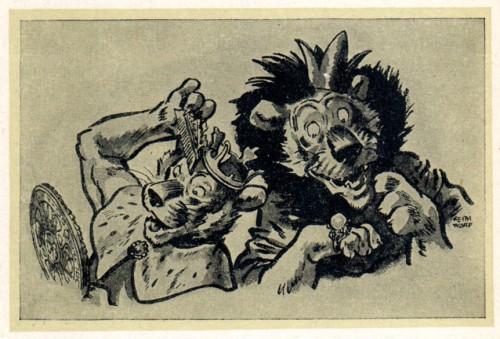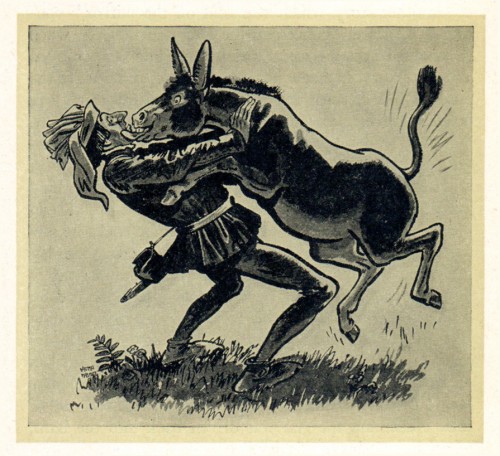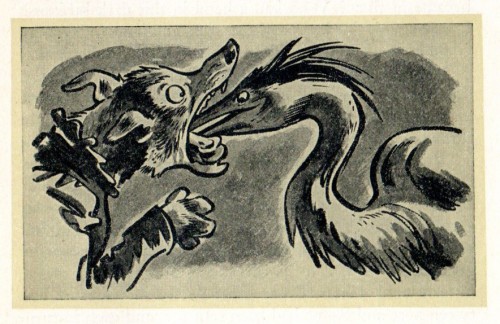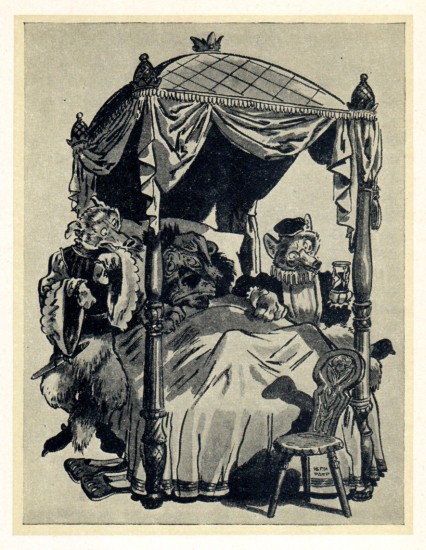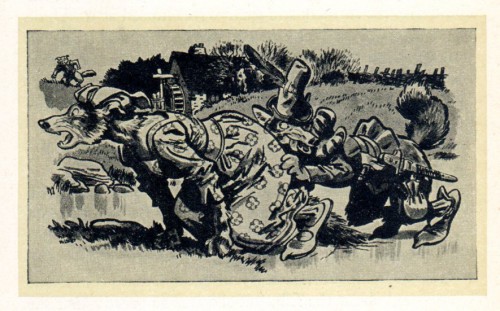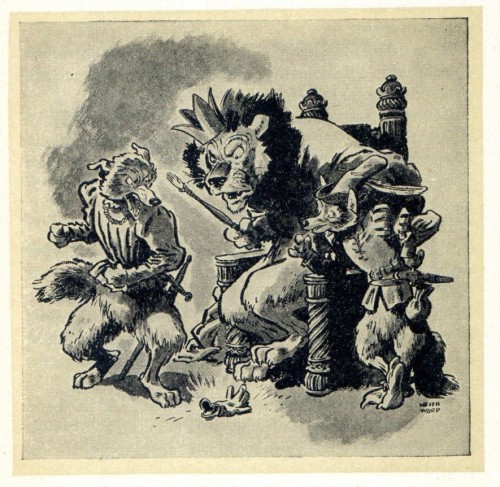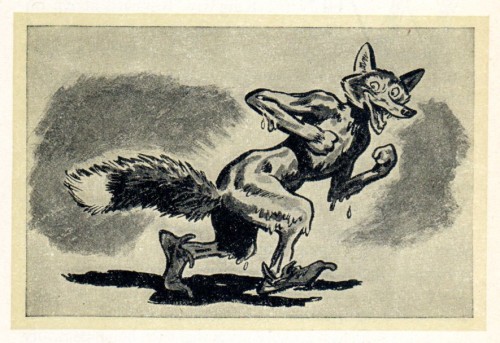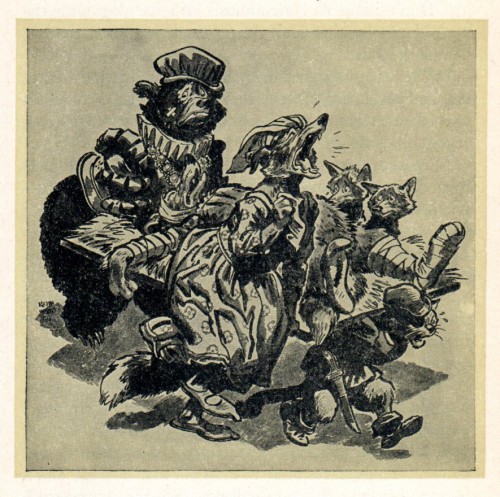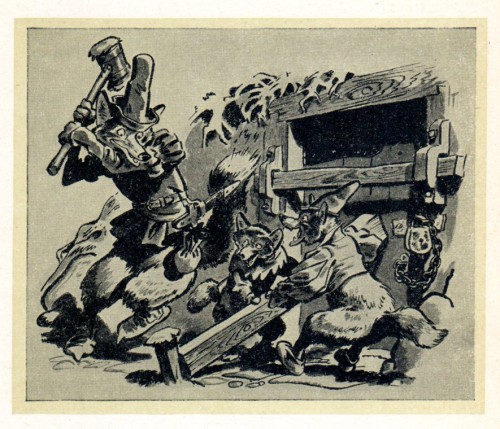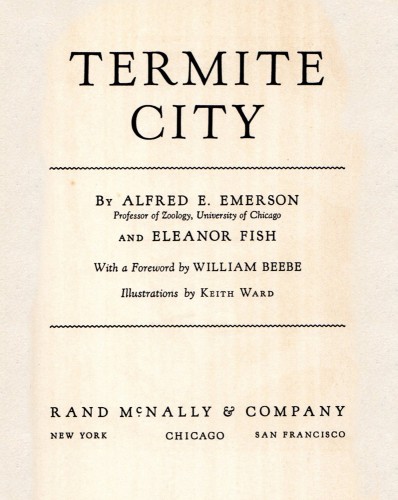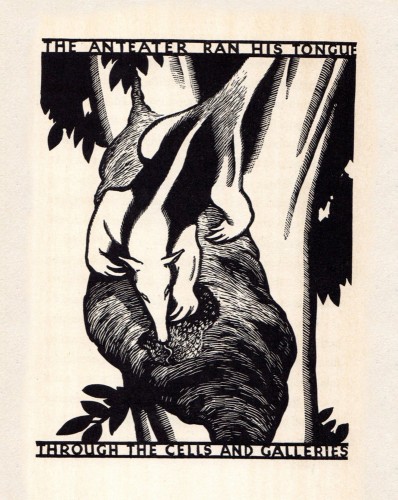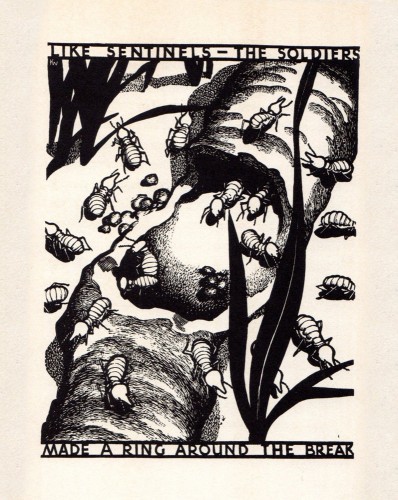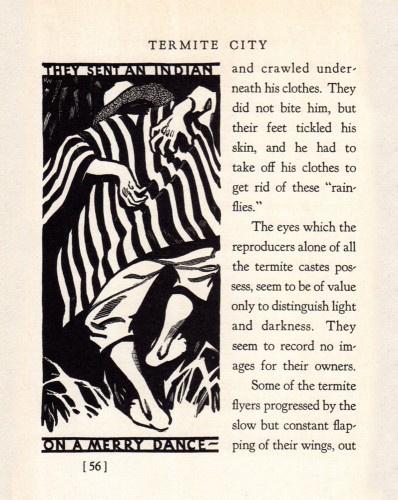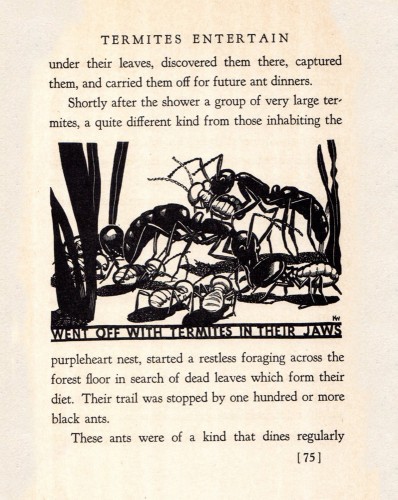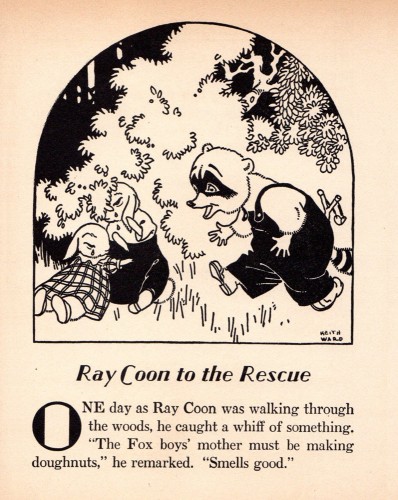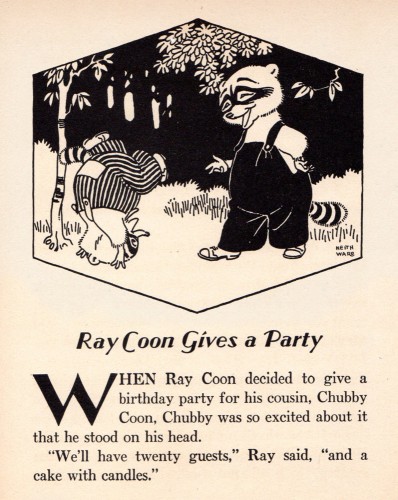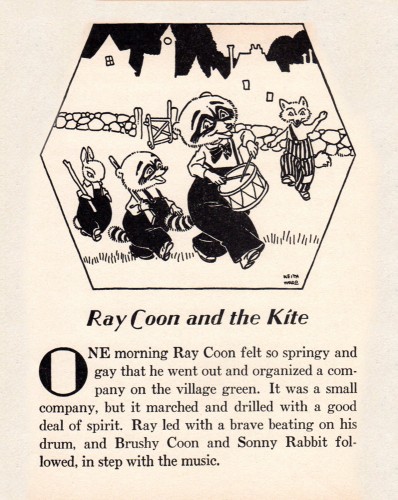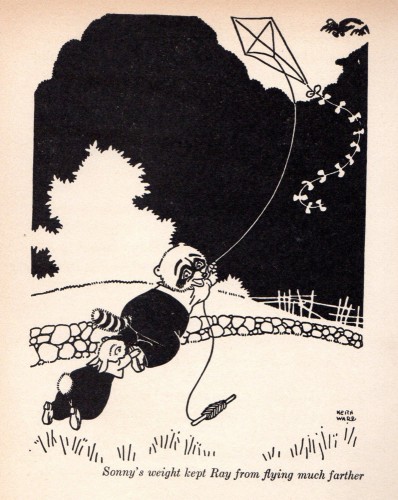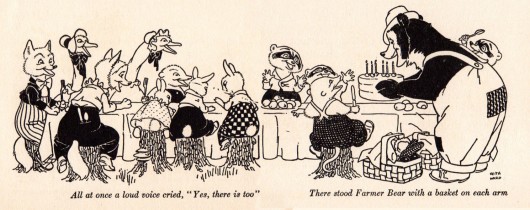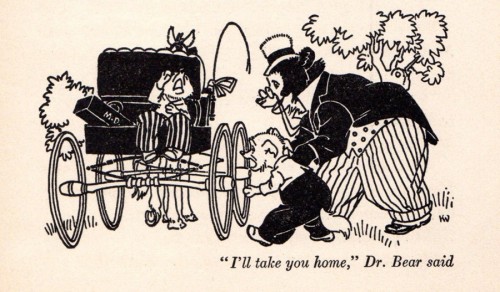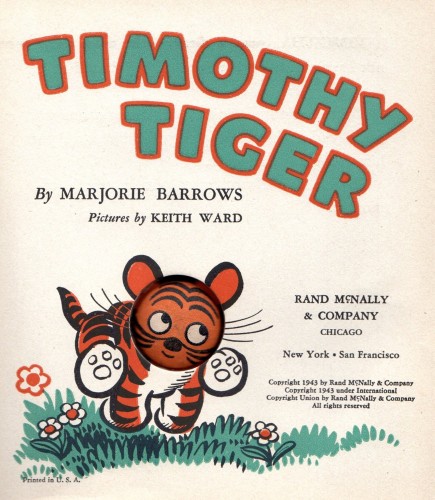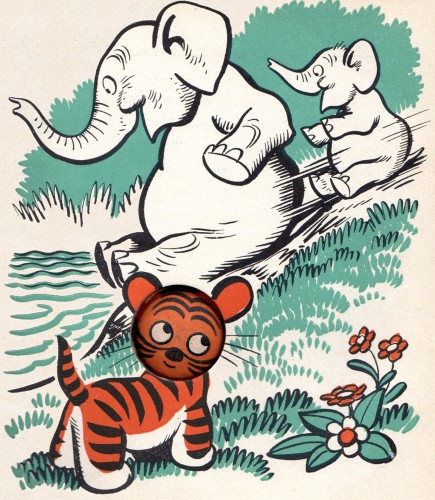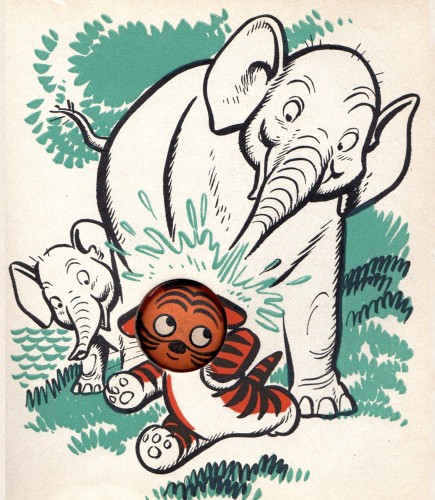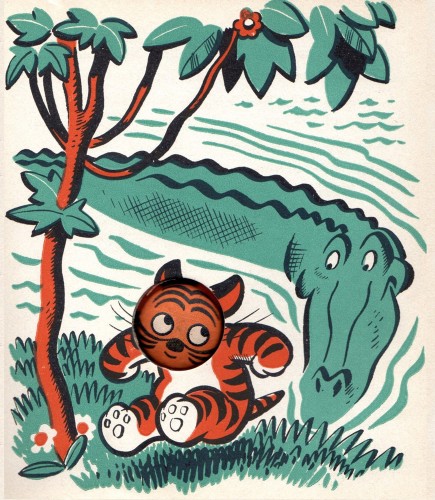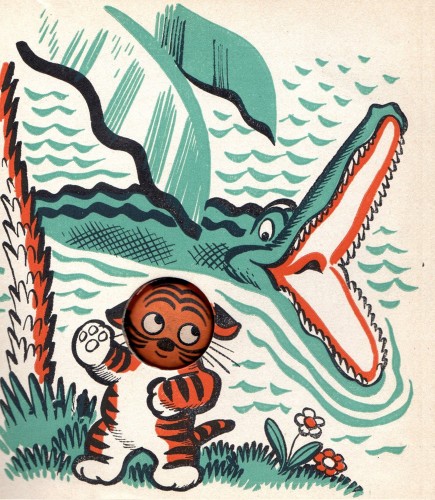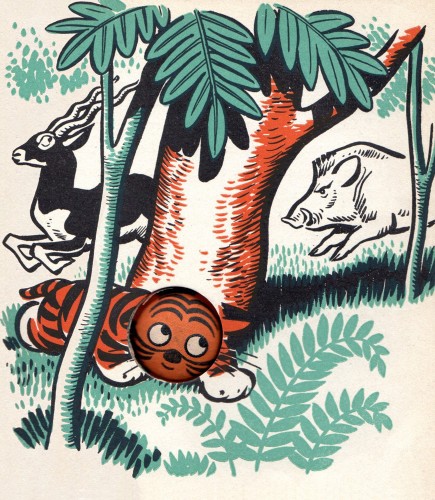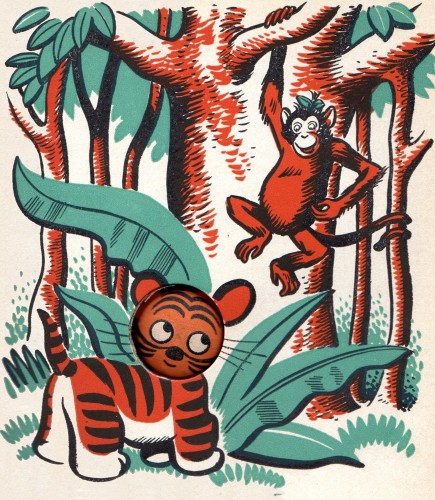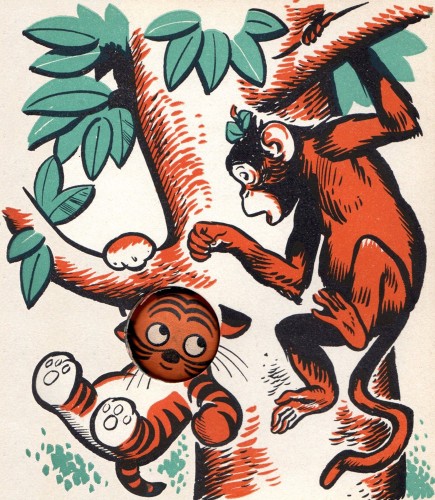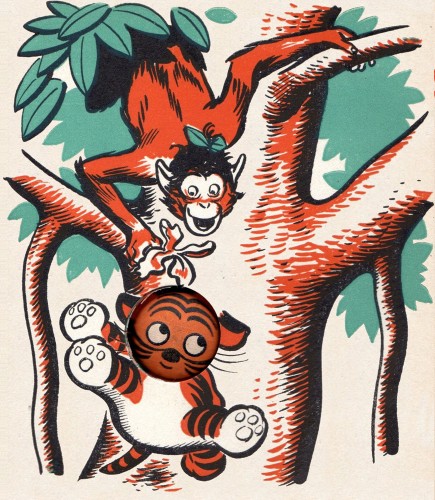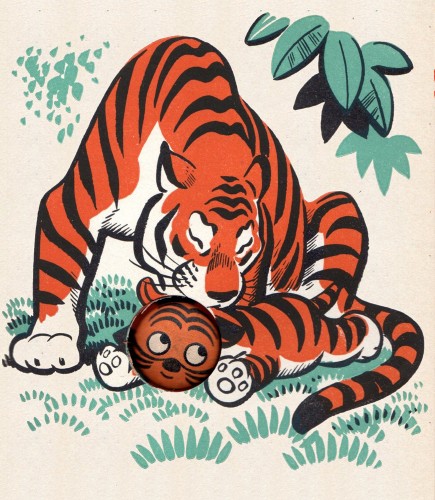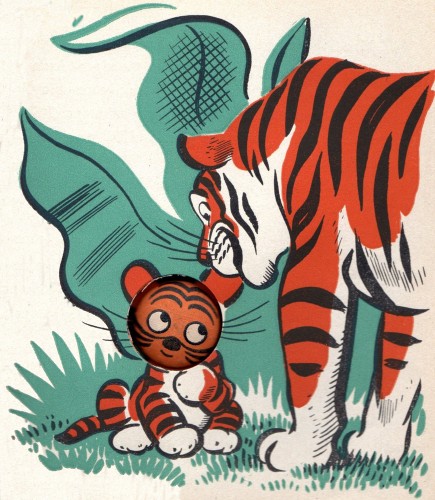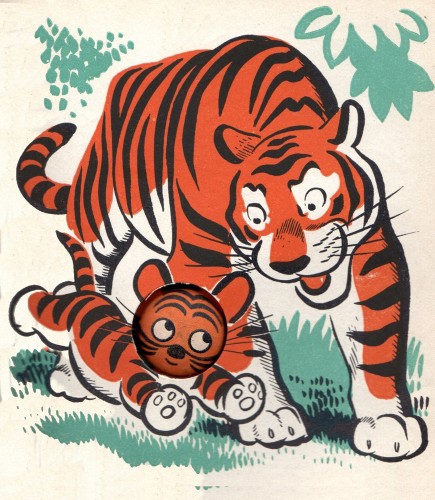Category ArchiveBooks
Animation Artifacts &Books &Comic Art &commercial animation &Models 11 Jul 2012 05:37 am
Berenstain Bear Models
- From Vince Caferelli‘s collection, this week we jump to his years at Perpetual Motion Pictures. The first Berenstain Bears Special, Berenstain Bear’s Christmas Tree, was done for NBC in 1979 and was followed by another four. This was a very successful half hour made from the comic strip which was created by Stan and Jan Berenstain. They wrote the original TV special which was directed by Mordecai Gerstein, Animated by Vinnie Bell, Vincent Cafarelli, Jack Dazzo, Lu Guarnier, Jan Svochak and Fred Mogubgub.
The Asst. Director was Candy Kugel, and the Bgs were done by Linda Daurio and Cotty Kilbanks.
Here are the model sheets which were drawn by director, Mordi Gerstein, and animator, Jan Svochak, from original drawings by Stan Berenstain. These, for the most part, are original pencil drawings of those models.
 1
1
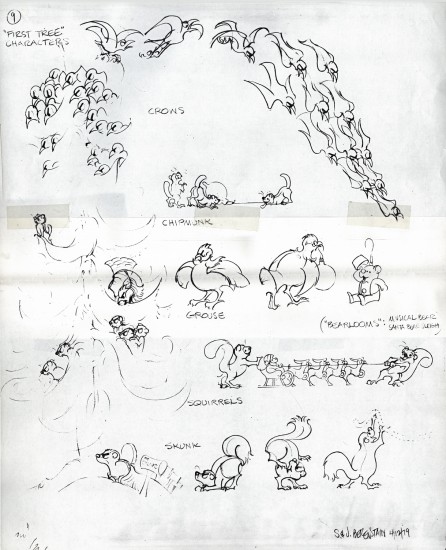 15
15
This ic a copy of a model digned by the Berenstains.
____________________________________
This is the half-hour Special as it appears on YouTube.
The next four models come from a later show, “The Berenstain Bears’ Littlest Leaguer.”
All are original models signed by the Berenstains.
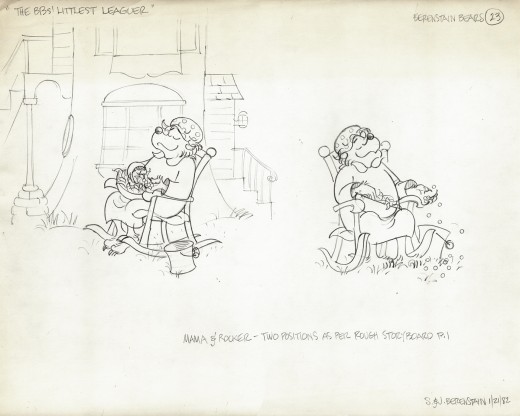
Bill Peckmann &Books &Illustration &Rowland B. Wilson 06 Jul 2012 04:29 am
Rowland Wilson’s Tubby & the Poo-Bah 2
- Last week I started scans of the 1972, Rowland Wilson book which featured his character, Tubby. Bill Peckmann sent me scans from the second in the Tubby series of books called Tubby and the Poo-Bah.
To see Part 1 of this book go here.
Here’s the remainder of that great children’s book
which begins where we left off: pages 32 & 33.
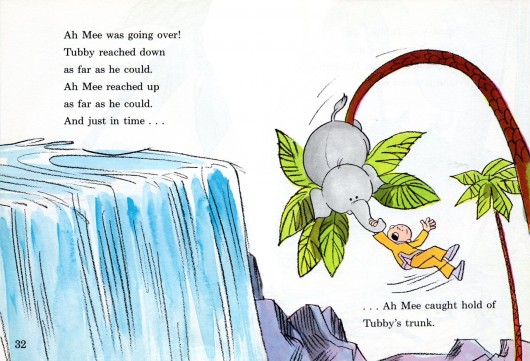
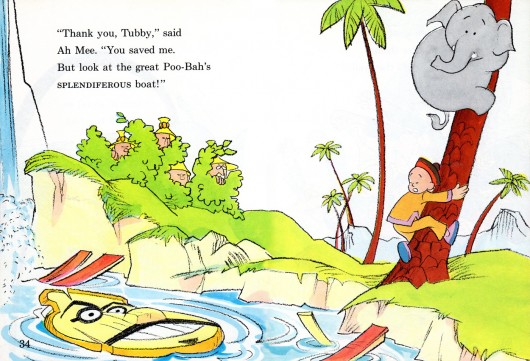
To complete the post, Bill Peckmann sent some photos from Rowland Wilson‘s California studio. He had a series of small figurines which he used to help in the design. Bill writes:
- “Rowland also had a way with an X-Acto blade, he was a master model builder and mixed media sculptor! These are studies he did to help him realize his cartoon characters.”
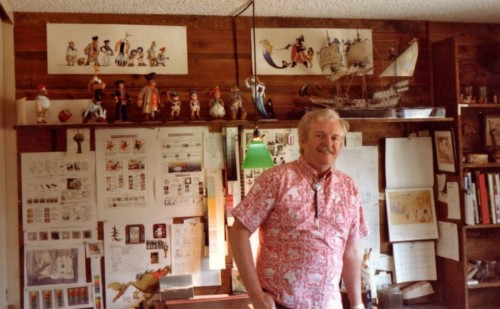 1
1
Should you want to see my post of the first Tubby book go here.
Bill Peckmann &Books &Illustration &Rowland B. Wilson 28 Jun 2012 06:24 am
Rowland Wilson’s Tubby & the Poo-Bah
- In 1972, Rowland Wilson published another book featuring his character, Tubby. (We’ve posted the first here.) Bill Peckmann surprised me with scans from the second in the series, Tubby and the Poo-Bah. Here’s what Bill had to write:
- Here is Rowland’s ‘Poo-Bah’ book. Lots of good news here, Denis Wheary‘s copy is almost in mint condition, the spine seems to be laying very flat for the scanner and RBW is really getting in the groove on this his second ‘Tubby’ book from 1972!
I would also say that the editors let Rowland run with this like the art directors did in his early print ads and TV spots and because of that, we all came out winners!
Here’s the first half of the book. The second half will come next week.
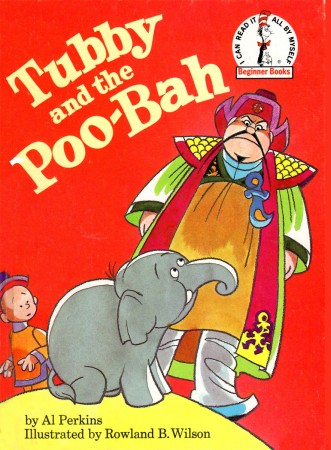
The book’s cover
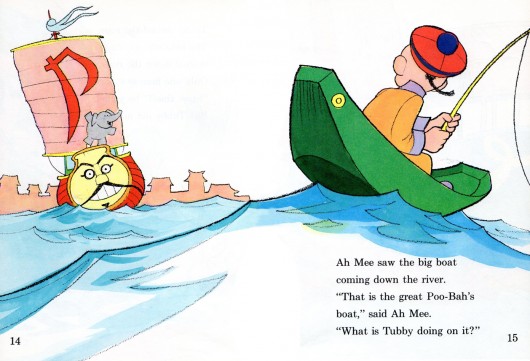
This double page spread is beautiful in it’s simplicity. The three levels
of foreground, middle ground and background are very neatly realized,
especially the up front wave swell with it’s sculpted boy and boat,
all those different shapes singing!
.
Bill Peckmann followed up this first half of the book with this:
-
Suzanne Wilson and I were admiring Rowland’s deft handling of water in ‘Poo-Bah’ and she was kind enough to send me these two ‘Mermaid’ pieces that RBW did. Add ‘em to your collection!
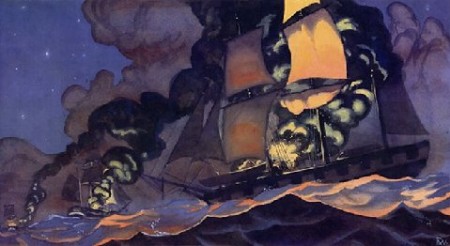 1
1
Bill Peckmann &Books &Comic Art &Illustration 26 Jun 2012 06:31 am
Animal Gags à la the New Yorker
- I love getting these out of the blue emails from Bill Peckmann, followed by a flurry of great cartoon scans.
Here’s the latest and his comments prior to sending:
- I just came across this 1979 book of mine, a collection of animal gags, all collected from past New Yorker cartoons, it has a bunch of our favorite cartoonists in it, Rowland B. (only 1 gag of his, but it’s a good one not seen before), 4 Peter Arno’s, 3 Whitney Darrow Jr.’s, 6 Charles Addams’, and of course the author/editors Gahan Wilson and George Booth, plus many more, all rib ticklers
With not one, but two legendary magazine gag cartoonists editing this 1979 collection of animal gags, what else can I say but enjoy!
Here’s a small portion of their pick of the litter.
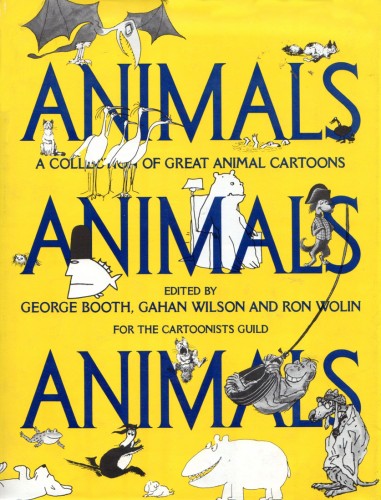
The book’s Cover
.
Many thanks to Bill Peckmann for the scans.
Art Art &Books &Illustration &Independent Animation &Layout & Design &repeated posts 19 Jun 2012 06:23 am
Norman McLaren Drawings – repost
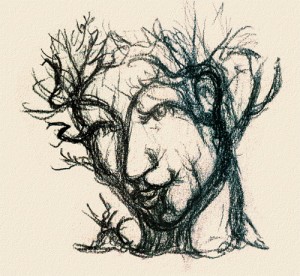 - I don’t intend to give an introduction to Norman McLaren or his work here, but he obviously was one of the solidly great film makers on the “Art” side of animation. His films are worth studying for their timing, if not for their sheer genius. As a matter of fact, his exercise films on timing are incredible (though I have no idea how you’d get to see them today.)
- I don’t intend to give an introduction to Norman McLaren or his work here, but he obviously was one of the solidly great film makers on the “Art” side of animation. His films are worth studying for their timing, if not for their sheer genius. As a matter of fact, his exercise films on timing are incredible (though I have no idea how you’d get to see them today.)
I do have a book of some drawings by him, and given the stories about China in the news today, I thought I’d post some of his drawings done in China. The book isn’t printed on the best of papers, so the quality of these drawings isn’t all it could be. However, I thought it might be worth showing this other side to his art.
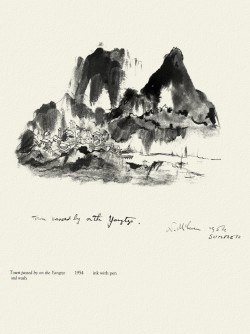 _
_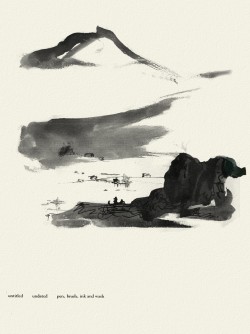
Moving away from China, there are two other drawings I thought compelling and
would like to share here.
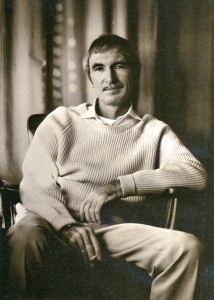

McClaren was certainly a brilliant artist, and his experimentation and developments brought about a real maturation of the art form. I wonder how he would have dealt with the technology we’re using today. Remember, he realized that the soundtrack could be drawn and did his own exploration of this part of the process.
The book was published in 1975 by Tundra Books.
Because the one illustration which graces the book’s cover, was of such interest to those reading my piece, I’ll start with the rest of that page. It’s a series of sketches done for the film, “LÃ -haut sur ces montagnes” and was drawn in 1945.
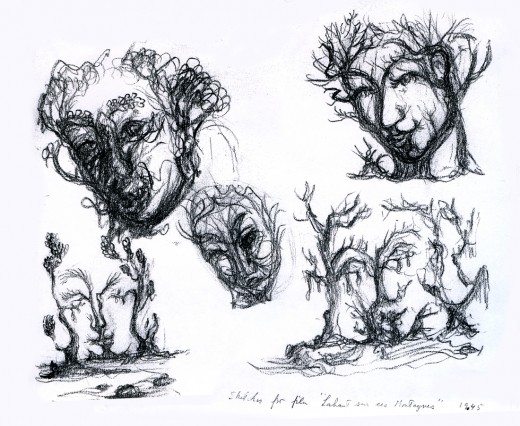
The two illustrations above are connected on the same page. I separated them .
The entire page is labelled: Sketches for the film, “LÃ -haut sur ces montagnes.”
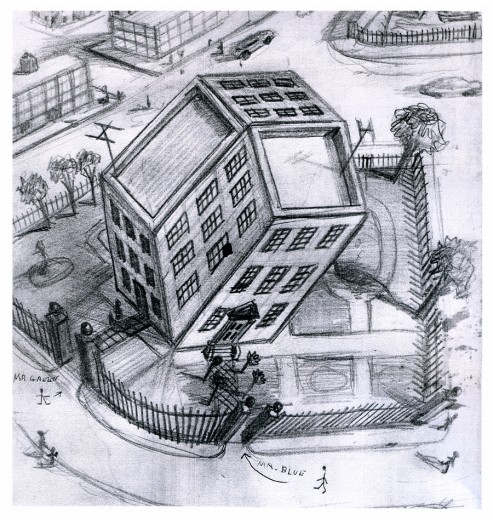
“Tesseractine House”
I’m fascinated that a number of his illustrations look not too unlike Steinberg’s work. It’s obvious he was an influence for a lot of animators in the late ’40′s.
Bill Peckmann &Books &Illustration 08 Jun 2012 04:59 am
Ward’s Elsie Cookbook
- Bill Peckmann sent on these scans of Keith Ward‘s illustrations for Elsie’s Cookbook. This book was a commercial product tie-in to Borden’s Foods who used “Elsie” as their trademark.The book was loaned to us by Denis Wheary. The two-color spot illustrations show off Ward’s ability to draw making it look like the most natural thing in the world. The ink line is also quite beautiful.
The remainder of the comments under the book’s pages are Bill’s.
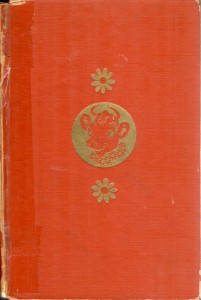 1
1 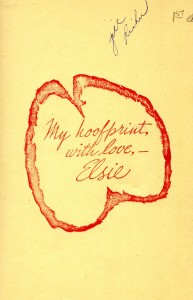 2
2Book cover / inner dedication
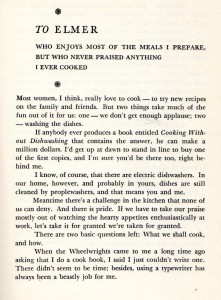 5
5 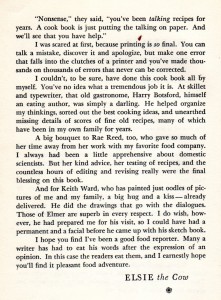 6
6
Elsie’s dedication to Elmer the bull. I’m assuming this
was before he went off and started hawking his glue.
Keith Ward is not listed in the credits, but Elsie gives
him his just due here in the dedication.
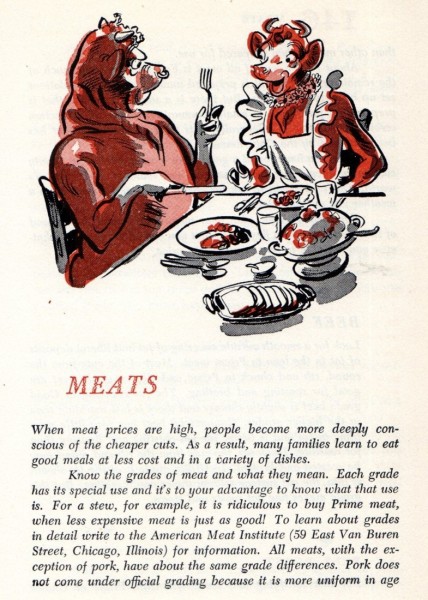 14
14
Whoa there, this chapter takes on a little bit of a
surreal quality, but the human condition being
what it is, always has a way of making
everything seem okay.
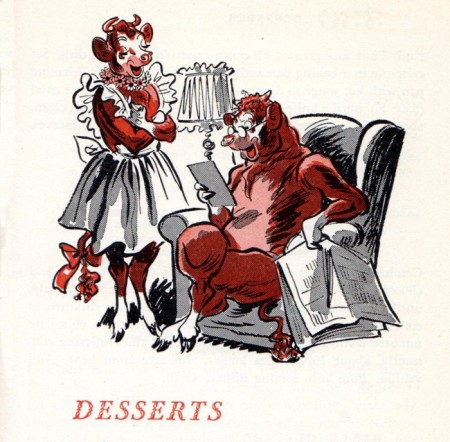 21
21
“Desserts”, this is the last chapter heading in the book, and kudos
again to Denis Wheary for sharing these not easy to find treats
with us! What a gift KW had to make animal drawing look so,
so easy. One wonders what he could have done in the animation
field given a chance, or if he had authored a ‘How to Draw’ animal
book, ala Ken Hultgren. In the ’50′s he did venture into
sculpting Halloween masks.
_________________________
.
From the years 1932 to 1952, from ‘Muggins Mouse’ to ‘Elsie the Cow’, from the age of 24 to the age of 44, we’ve seen in our last few postings of his work, artist Keith Ward‘s amazing range of talent. Here, at the end of our last posting of Denis Wheary’s marvelously, shared, book collection, we’ll reprise a few of KW’s charming, early examples of breaking into the field of illustration in 1932.
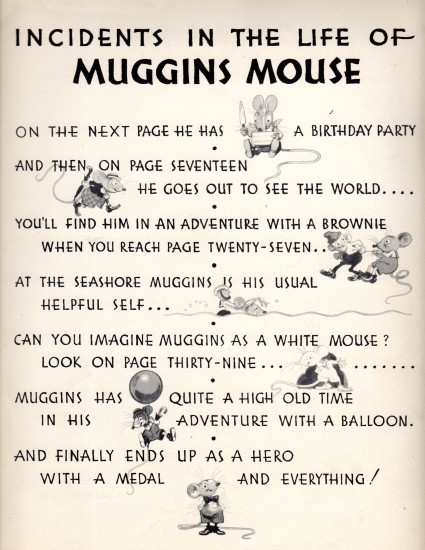 1
1(We’ve posted some of this material before, but these scans
came from the original books rather than copies of the books.
We thought it worth revisiting to show the varity and depth
of Keith Ward’s work.)
Many thanks to Bill Peckman and Denis Wheary for forwarding this book to us.
Bill Peckmann &Books &Illustration 01 Jun 2012 09:15 am
Keith Ward does Edward Lear
- Bill Peckmann filled my box with some delightful images by illustrator Keith Ward. These are the illustrations of a book of Edward Lear‘s poems. I’ll let Bill’s word carry the rest of the post:
- Through the generosity of Denis Wheary and his Keith Ward book collection, we are able to pop up a few pages from an old, wonderful 1932 book. The pages are some of the complete “Nonsense Rhymes” of Edward Lear, beautifully and charmingly brought to life by Mr. Ward. Even though small in it’s pocket book size, the book is large in it’s presentation, and the accomplished illustrated art belies the age of the young 26 year artist, Keith.
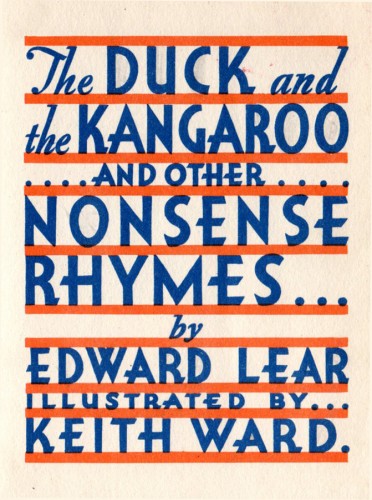 1
1
_______________________________
Bill Peckmann also sent the following note and email:
- Putting Keith Ward on the front burner again, has made a couple of neat things happen. With the help of Leif Peng, I was able to get in touch with Keith’s daughter, Eileen, and her son, Alan (Keith’s grandson).
Between the two of them, we can start to learn about the artist, Keith Ward, as a man. Up until now, it has not easy to get any kind of history on KW. Another one of those great talents that shouldn’t be falling through the cracks of art history. (Sadly, it happens too many times, thank God for blogging!)
Her son Alan is an artist in his own right. Here’s is Alan’s blog (click on above). On it, he makes comments about his grandfather, it makes very interesting reading.
I will also send you their responses to my inquiries, if you don’t mind reading other people’s mail. Hopefully, with the help of Leif Peng and myself, KW will become less of a mystery.
Too bad Rowland Wilson isn’t with us anymore; he’d be getting the biggest charge out of all of this. He was a huge KW fan and never got to know anything about him. Funny thing is, they both lived in the environs of Westport CT. and then they both moved to California, and IMHO they are both a cartoonist’s cartoonist and both never seemed to get the recognition they so richly deserve, go figure.
Here is the letter from Eileen Ward Scott-Moncrieff, Keith Ward’s daughter. She lives in Scotland. I had sent her and her son, Alan, all of our recent posts of KW’s work.
-
Dear Bill,
Thank you for your email and your appreciation of my Dad’s work. Of course you can send my email address to Leif Peng, whose websit I’ve seen.
I was born in Connecticut, my parents designed and built (had built) a house in the woods on Echo Hill, Silvermine Road, New Canaan. Daddy worked from home and in later years he built a studio in the yard. The studio he originally designed had a huge slanted window, and he worked there for many years until I was a teen-ager. He worked for many advertising agencies in New York, and would send his work in–sometimes latterly I would be his courier. He always wanted to work free-lance, even in later life, after I married a Scotsman and moved to Scotland, where I still live. After I left home he and Mother moved to California (the bottom dropped out of the illustration world in the 50s when photography replaced illustration), where he continued to work as a painter, and had a gallery and taught classes. I noticed, by the way, something by Paul Webb on your website you sent Alan–he also lived on Echo Hill in Silvermine–there were 5 houses there–once when Paul was sick Daddy did his comic strip for him until he was better!
My father was always kind and generous with his time. He would always stop work and help me with anything I needed. He never said, “Go away, I’m busy.”
I too am an artist, but for years I lived under the cloud of my father’s talent–he could draw anything out of his head, which I could never do. I remember I was doing some portraits of children of some people I met, and Daddy came into NY to see what I was doing. He said, “You have something I don’t.” Which amazed and touched me. It wasn’t really true I don’t think, but he always supported me, and respected me–which is true humility, I think.
I dream about him a lot, he died when I was in Kosovo. He was in a home in California when he died, not Florida. He had had a stroke in his eighties and that, coupled with his near-blindness finished his painting. But up to the time he had the stroke, he was still teaching classes, despite the macular degeneration, just getting more and more impressionistic….My mother had died 3 years before and my brother took him back to California–he never lost his humor or his happiness. He was almost 94. He was the best man I ever knew.
If you have any specific questions I will be glad to try to answer them.
Thank you for your interest and appreciation of my Dad.
All the best,
Eileen Scott-Moncrieff
Books &Disney &Illustration 31 May 2012 06:14 am
Retta Scott’s Cinderella
– Retta Scott‘s name was always an intriguing one for me.
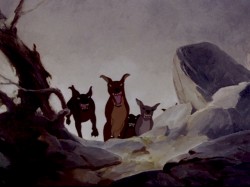 She was an animator on Bambi, Dumbo and Plague Dogs. She was layed off at Disney’s when they hit a slump in 1941 but came back to do a number of Golden Books for Disney. The most famous of her books was her version of Cinderella, one which was so successful that it remains in print today as a Little Golden Book.
She was an animator on Bambi, Dumbo and Plague Dogs. She was layed off at Disney’s when they hit a slump in 1941 but came back to do a number of Golden Books for Disney. The most famous of her books was her version of Cinderella, one which was so successful that it remains in print today as a Little Golden Book.
When asked why females weren’t animators at the studio, the Nine Old Men who traveled the circuit, back in the 1970′s, often mentioned her. They usually also said that she was one of the most forceful artists at the studio, but her timing always needed some help (meaning from a man.)
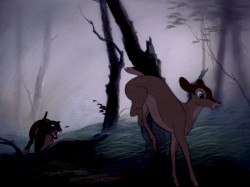 Ms. Scott was known predominantly for her animation in Bambi. Specifically, she’s credited with the sequence where the hunter’s dogs chase Faline to the cliff wall, and Bambi is forced to fight them off.
Ms. Scott was known predominantly for her animation in Bambi. Specifically, she’s credited with the sequence where the hunter’s dogs chase Faline to the cliff wall, and Bambi is forced to fight them off.
The scene is beautifully staged and, indeed, is forceful in its violent, yet smooth, movement. I was a young student of animation, at the time, so this sequence has always had a long and lasting impression on me.
.
,
I’m curious to know how Western Publishing proceeded with the illustrated Disney books. Apparently a large number of Disney artists contributed to the books – at least in the 40′s & 50′s. Bill Justice, Dick Kelsey, Mary Blair, et al. Then, of course, there are the Golden Books that didn’t have a Disney connection by Disney artists. The Poky Little Puppy by Gustaf Tenggren is, of course, the most famous of these.
(Retta Scott working on Pastoral seq. from Fantasia. From The Art of Walt Disney by Finch.)
Here are some of her illustrations for Cinderella published in 1950 to tie in with the Disney film. Oddly, the illustrations don’t completely look like the film’s characters. The cat and mice are close, but Cinderella, herself, is very different, less realistic. She looks more like a Mary Blair creation. When I was young, I was convinced that these were preproduction illustrations done for the film. If only.
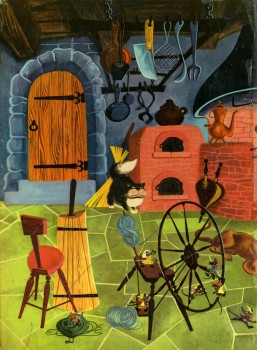
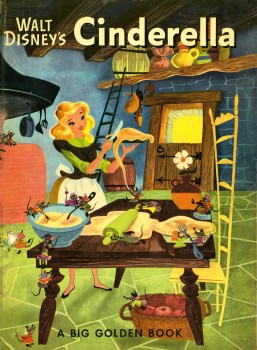
Bill Peckmann &Books &Illustration 29 May 2012 06:28 am
Reynard the Fox
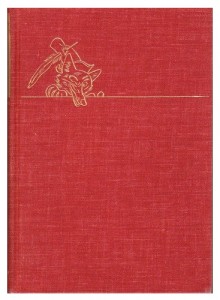 - Here are illustrations by Keith Ward from the book, Reynard the Fox, which was published in 1945.They are outstanding illustrations from an artist whose every work seems to be outstanding. These were sent to me by Bill Peckmann, and this is what he wrote to accompany the scans:
- Here are illustrations by Keith Ward from the book, Reynard the Fox, which was published in 1945.They are outstanding illustrations from an artist whose every work seems to be outstanding. These were sent to me by Bill Peckmann, and this is what he wrote to accompany the scans:
- Here are Keith Ward’s illustrations from ‘Reynard the Fox’. And beauties they are, all
35 of them! For me, being very partial to the Caniff/Sickles school of cartoon/illustration, these fall right into that wonderful 1940′s category and it makes me wonder if Milt or Noel could have been as facile with animals as Keith Ward was.
A couple of side bonuses, and they are this, the drawings have the same realistic cartoon playfulness that illustrators Jack Davis and Wally Tripp infuse in their art and you’ll get to see foxy Reynard’s influence and inspiration that found its way into Disney’s ‘Robin Hood’ feature. (Turn to Will Finn‘s July 22, 2007, excellent “expose” blog for that story!)
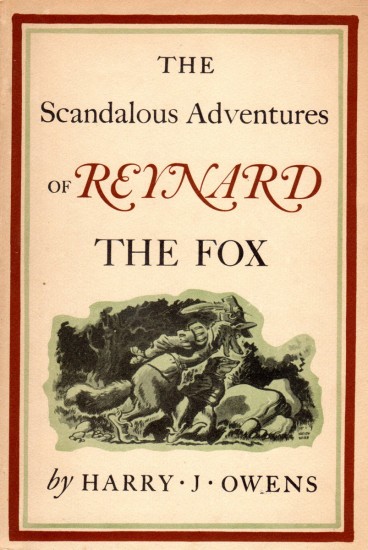 1
1
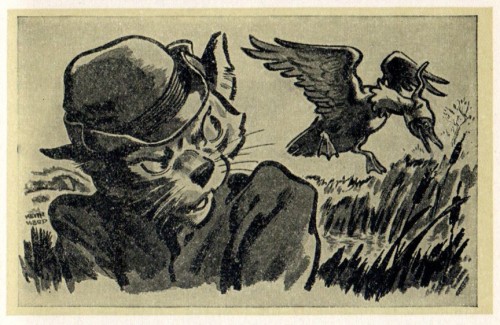 7
7
This, to me, is a GREAT illustration. Brilliant work in a book.
Marc Davis spent a lot of emotional weight developing the story for a feature to be called Chanticleer and the Fox (Andreas Deja has a wonderful posting on his site about this film.) This film combined the stories of Chanticeler the Rooster (Chaucer) and Reynard the Fox (Rostand). Disney opted to bypass this film to make the story that was developed by Bill Peet, Sword in the Stone.
Thanks again to Denis Wheary for lending us his Keith Ward book!
And thanks to Bill Peckmann for scanning and sending and getting the copy from Dennis.
Bill Peckmann &Books &Illustration 25 May 2012 07:03 am
Keith Ward Sampler – II
- Bill Peckmann has plugged me into some artwork and illustration by the very talented artist, Keith Ward. I’ve already featured a number of his pieces on several different posts. Last week, I featured a sampler of his illustration work. Here, I’d like to continue that.
Today we feature three separate books by Mr. Ward. These were sent to me by Bill, and from here on, I’ll let Bill do the tellng:
- It’s with many thanks again to collector/fan Denis Wheary, that we are able to sample more of illustrator Keith Ward’s early children’s book art. This time around we get to see how Mr.Ward handled ‘black and white’ and three color illustration back then.
- Because of his very beautiful color art for books and magazines (his covers for ‘Child Life’ magazine are outstanding!) in the 1930′s, these first excerpts might not even look like the hand of KW. They are taken from a non fiction, ‘National Geographic’ type book titled ‘Termite City’, published in 1937. The ‘serious’ subject matter drawings are very successfully designed and executed in scratchboard.
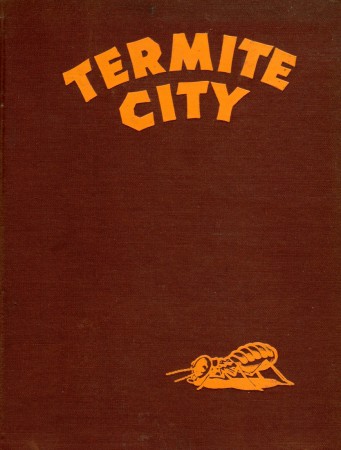 1
1
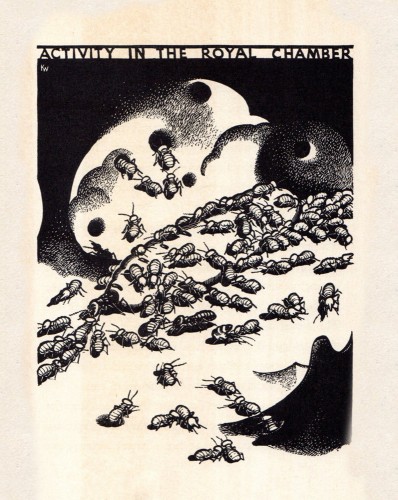 5
5
Ah, finally a humorous subject matter and
Keith Ward does what he does best!
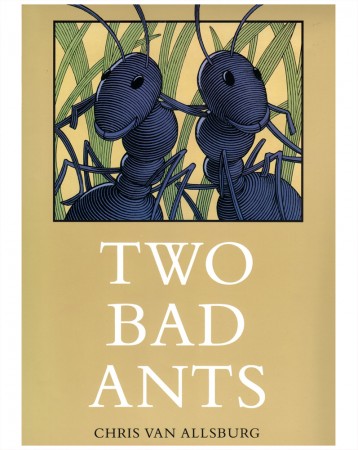 8
8
Side note: After seeing the previous drawing, I thought of
Chris Van Allsburg’s beautifully rendered 1988 book,
‘Two Bad Ants’. Was there any inspiration there from
‘Termite City’, hmmm?
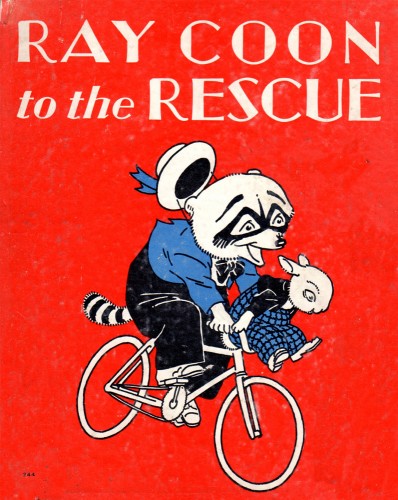 9
9
Here are a few pages from Keith Ward’s ‘Ray Racoon to the Rescue’,
all black and white art and published in 1938.
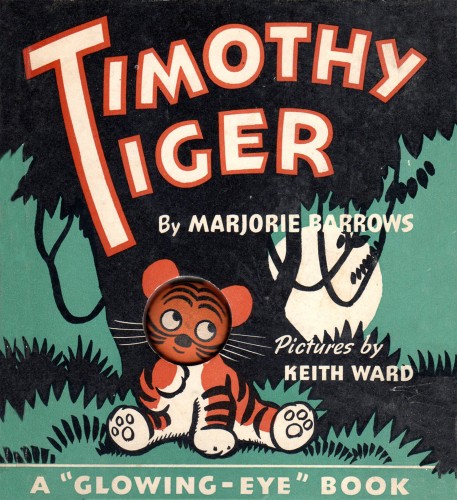 18
18
Front cover.
Published in 1943, here are some pages from KW’s three color book
and they show how to handle a ‘gimmick’ die-cut problem very successfully.
The last few pages of tiger art are beautiful.
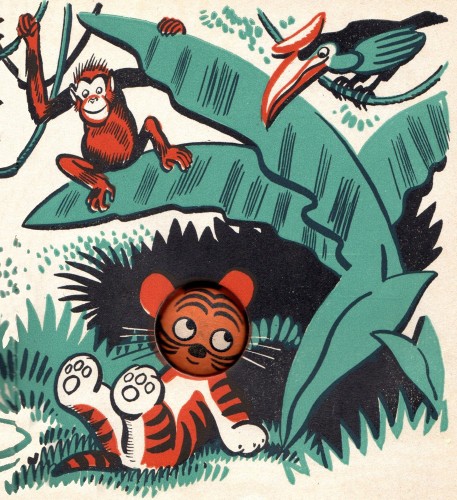
Here is the end cover with an end note.
Thanks to Denis, I’ve become reacquainted with a book,
which it turns out, might be my first remembered book from childhood.
It was the ‘glow in the dark eyes’ that hooked me then, but now I’m
very grateful to rectify that by being able to understand the terrific art.
